Just an hour outside of Lisbon, you can escape the crowds and find yourself in the coastal town of Cascais. Cascais was the beachfront getaway for much of Lisbon’s aristocracy throughout the 1800s and as such, it still to this day remains one of the most elegant and relaxing cities to visit outside of Lisbon. From the town of Cascais, you can take the road less than 30 minutes up to Cabo da Roca, the westernmost part of continental Europe and visit a few of the most picturesque beaches on your way back into town. Who knew all these could be found just an hour outside of Lisbon.
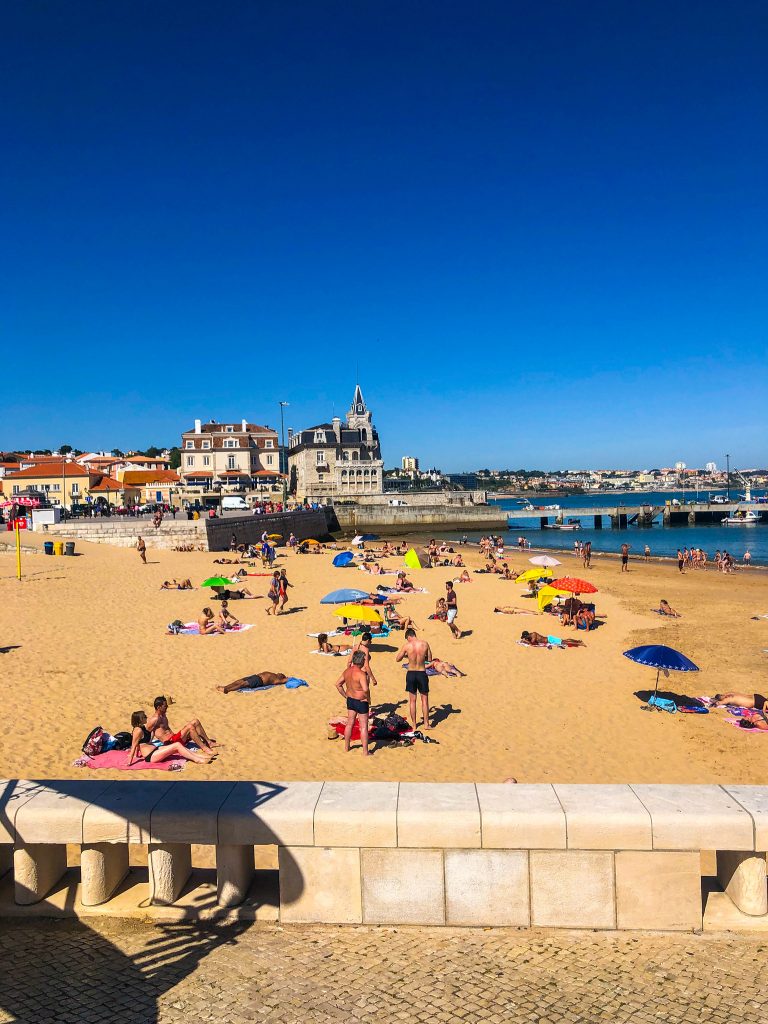
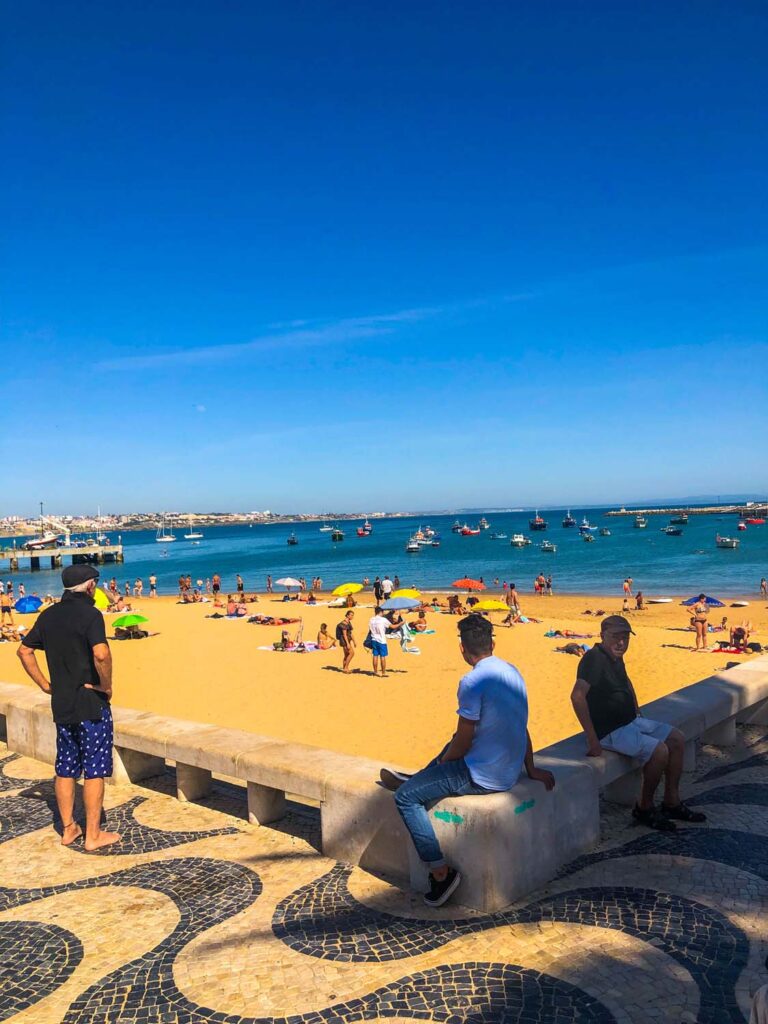
History
Cascais, pronounced “cash-ky”, is a word developed from the Portuguese “cascas” which means “shells” since the town was located so close to the waters where thousands of shells would wash ashore. The town’s proximity to the seas made it a hub for fishing and the money it brought in from those exports gained it the privilege of self-government in 1370 as decreed by King Fernando. Cascais rose to prominence with the title, and it became the first place Portuguese navigators would see when they returned from voyages around the world.
Lighthouses, military operations and forts were all built to support the town as a great lookout point for the country’s capital, Lisbon. Over the years, as the naval wars began to dwindle, its use as defensive maritime fortresses waned. But it’s elegant architecture, and charming city structure meant that people continued to flock to its shores and it was transformed into a luxury beach town for the aristocracy of Portugal. Years later, Cascais is most famous as being the writing haunt of famed author Ian Fleming, who wrote the classic James Bond novels in a hotel in Cascais. He had visited the town when he fought in World War II and came back here to write after the war was over. Many of the seaside settings throughout his novels all have some inspiration drawn from his experiences in Cascais.
DIY Tour
When we were planning our trip to Cascais and Cabo da Roca, we couldn’t understand why we couldn’t find much information online about a do-it-yourself tour. A lot of people visit Cascais and Cabo da Roca as a part of a day trip, sometimes also paired with a visit to Sintra. After visiting both Sintra and Cascais (along with Cabo da Roca) I genuinely do not know how they do it all in one short day. I suppose it’s more of a drive by viewing rather than a chance to really explore and understand each one of these incredible places. There is simply too much to see!
I think with this guide you can easily explore the wonders of Cascais and Cabo da Roca on at your own pace and save a ton of money too. It might require a little extra planning and effort on your part but if you’re up for it than I think it will pay you back in dividends.
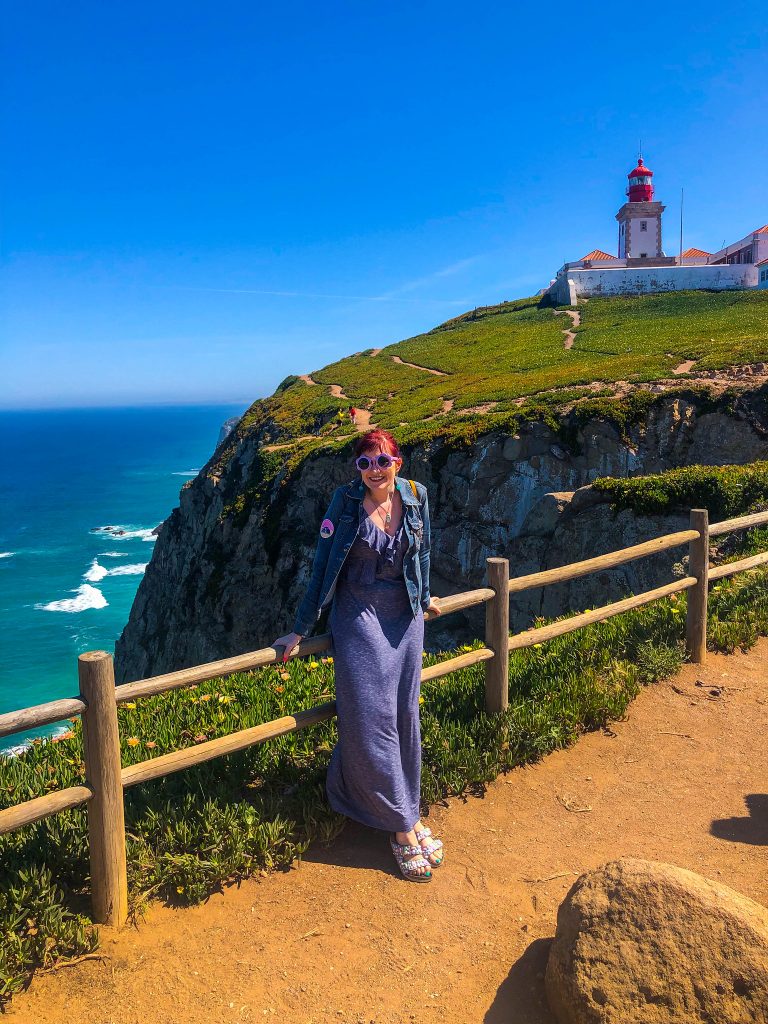
How to get to Cascais
By car
If you have a vehicle getting to Cascais is a breeze, it’s just 35 minutes outside the centre of Lisbon. Parking can be found easily across Cascais and the surrounding countryside. On very busy days parking can be tough at the beach but there is usually places to park along the roadside where you can then walk over to the beach. Be sure to have coins for the tolls.
by Train
If you don’t have a car, not to fear. There is a train which leaves from Cais do Sodré station in Lisbon which services Cascais in just under an hour. The train journey costs just 2.20€. Be sure to have your metro zapping card with you since it makes jumping on and off the train easier than buying individual tickets.
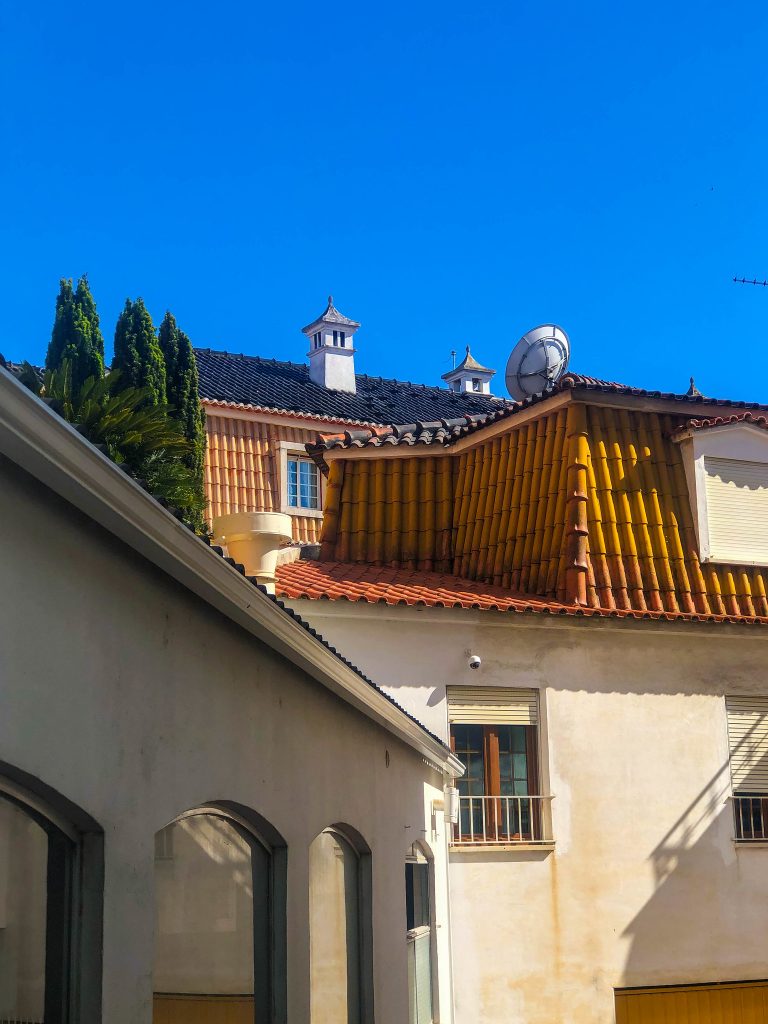
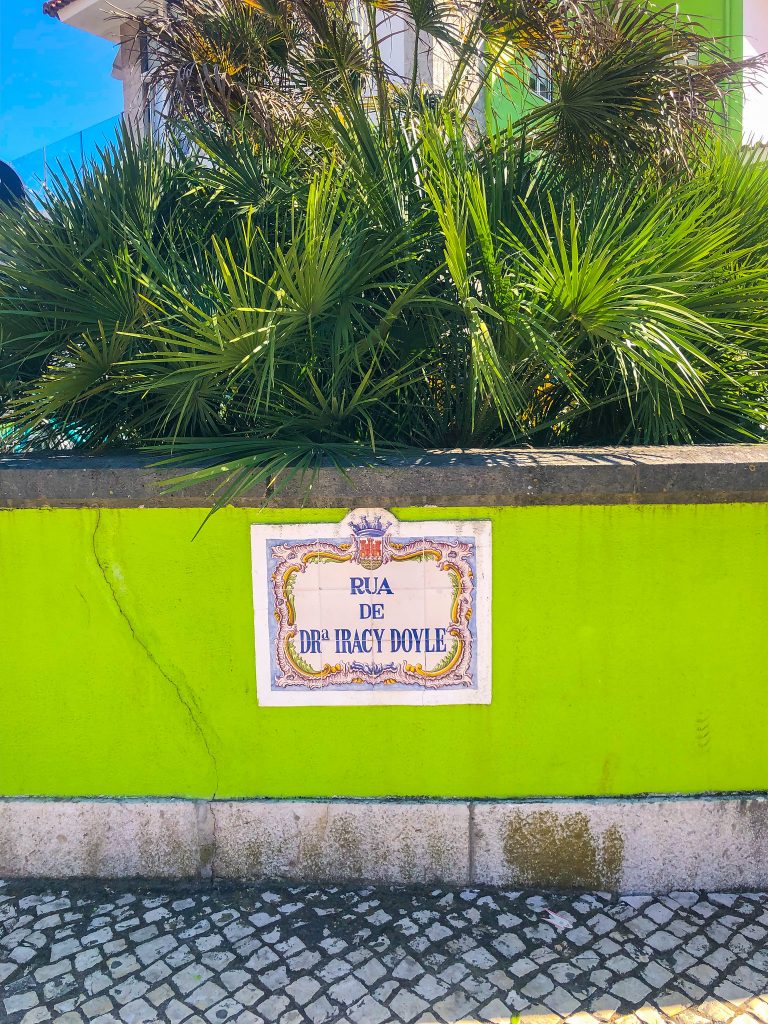
Getting Around in Cascais
Car
If you have a rental car you can just drive from point to point from each of the destinations listed in this guide. Of all the methods of transports it’s the least complicated but does require the investment of the rental car. If you haven’t already rented one for the rest of your trip I don’t advise that you need to rent one just for this day-trip, it’s easily manageable without.
Walking & Bike Rental
The town of Cascais is relatively small, so walking around the sites in town is super easy on foot. If you just want to explore the beaches along the coast, there are bike rentals all over the place and bike paths too which makes getting to and from those areas a breeze! You can walk to most of the beaches but renting a bike is just that much more fun! While biking or hiking all the way up to the furthest point on our tour isn’t for the faint of heart it would be an absolutely beautiful hike/bike for those who are up for the challenge.
Tourist Bus (a word of caution)
To get out to all the destinations in this guide without a car, you’ll need to take the Scotturb buses. We opted for the tourist hop-on-hop-off bus, but honestly, we weren’t that impressed. When I got home I saw just how abysmal the reviews were and with good reason. When we told the driver we wanted to get off at Praia do Guincho, he seemed shocked that we actually wanted to “hop off” on a hop-on-hop-off bus! And even after asking he didn’t remember to stop. I ran up to the front and reminded him and only then did he, grumpily may I add, pull over and let us out. Our experiences certainly don’t look out of the norm based on the 1-star rating, and I’m surprised they still have this service up and running.
Advice on the Bus
If you have the money to spend and don’t mind waiting on late drivers and being firm about telling them where you want to get off and making sure they do indeed stop, then go ahead with the sightseeing bus but just be sure to read the reviews before you do! The upside to this bus is that you can “easily” get to all the destinations without having to figure out the public bus routes. Hopefully they’ll be improving this service, let me know if you decide to venture out on it and how your experience rates. The sightseeing Cascais buses run every 45 minutes from around 10 am to 5 pm but be sure to get the updated schedule from the main loading dock at the Cascais train terminal. A ticket costs €20 (€10 children under 12) + 0.50 card, and is valid for 24 hours.
Public Bus
The public transport system to and from different destinations in Cascais is a bit complicated. I understand how they get tourists suckered into only using the “sightseeing buses”. That being said, you can absolutely do this tour using the local buses. I’ve made sure to mark all the stops down on the map at the bottom of the post. I’ve also detailed each step out for you in this guide since most people are likely using public transport to get around. Fares on the bus cost €1.15 per journey and you’ll only need to ride them 4 times so the savings compared to the sightseeing bus are very significant. The three bus routes you’ll need are the 403, 414, and 415. (I’ve linked each of their schedules here as well as within the post.)
Uber
Another option is taking Ubers to and from each location. Depending on how many people you’re with, you could actually save some money here compared to the sightseeing bus. Uber’s cost around €12-17 from Cascais to Cabo da Roca. €9-13 from Cabo da Roca to Guincho Beach. And €5-8 from Guincho Beach to Boca de Inferno. The highest estimated cost is €38, which is actually cheaper than two people taking the tourist bus! The only risk you might consider is that there wouldn’t be any Ubers driving around that day. If so, you can easily find the nearest public transport option and hop on that.
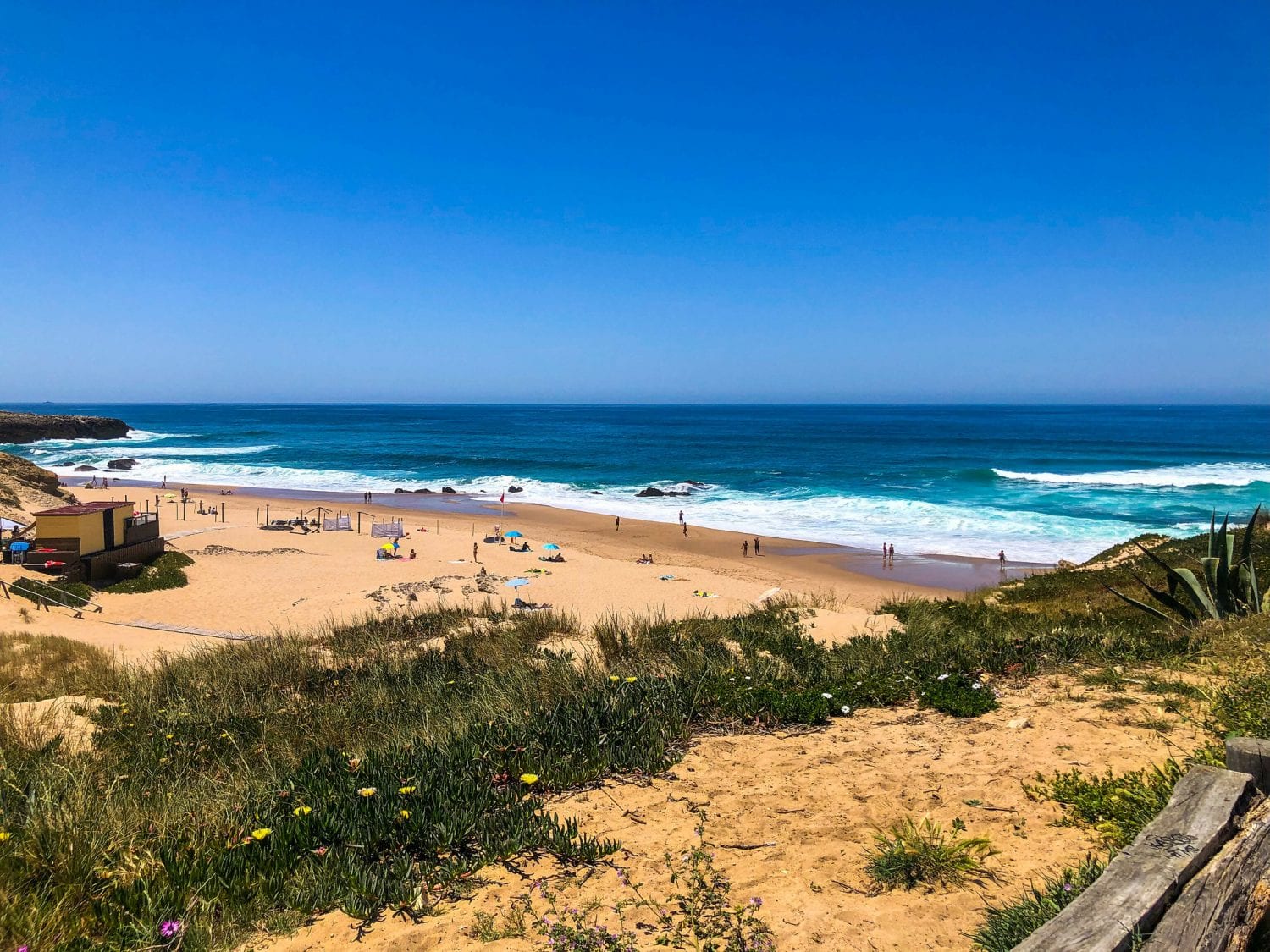
What time of year to go?
The cooler weather during the winter and late fall makes Cascais a little less appealing to visit. Lying out on the hot sand and soaking in the surf and the sun is all part of the coastal experience. But if you do choose to visit during “off-season” you’ll be rewarded with less crowded attractions. The buses run on a slightly modified schedule during the winter so be aware of that as well if you choose to come down in the winter.
Spring and early summer are the best times to visit. Even on a hot day, the winds off the water, bring the temperature down a lot compared to in the city. And if you’re too hot, you can always just jump into the water to cool down! Try your best to come during the week since the weekends and holidays mean the beaches are packed.
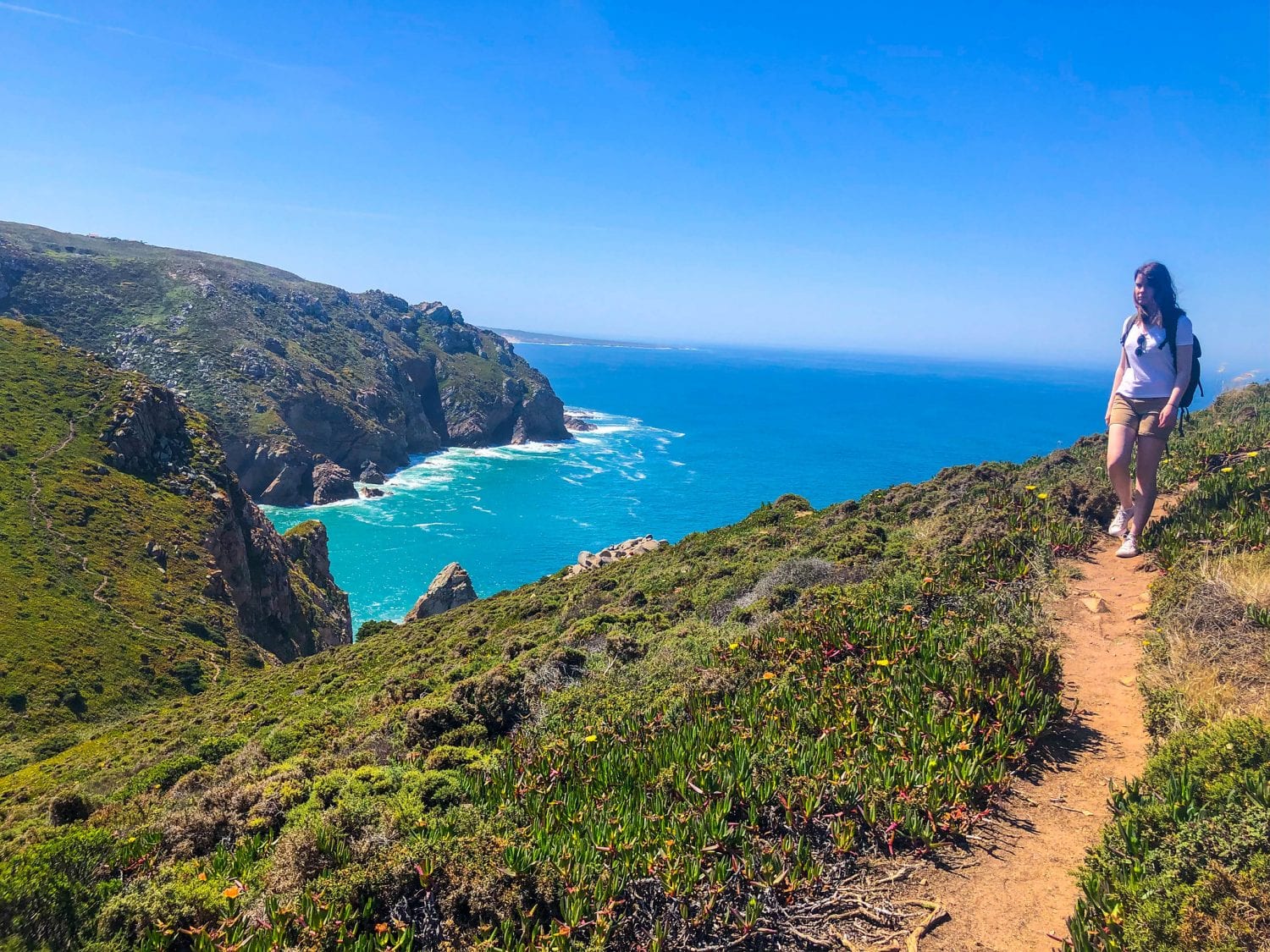
Self Guided Tour
Stop #1: Cabo da Roca
After arriving at the Cascais train station, the first stop on your journey should be Cabo da Roca. Cabo da Roca is the furthest point on our tour from the Cascais terminal. It’s good to get it done first thing in the morning as it’s also the most popular sight on tour. Around midday, it can get extremely crowded so early mornings really pay off. I’d recommend leaving Lisbon just after 8 am to arrive in Cascais bright and early. Grab a few pastries and a cup of coffee for the train ride and enjoy the scenery as you go!
If you’re driving, you can simply head up the road and leave your car in the National Park’s parking lot. For the bus, catch #403 from the Cascais bus terminal. If you choose to take the sightseeing tourist bus, you can catch this outside of Cascais Train station as well. Either way, you go, you should reach the peaks of Cabo da Roca in around 20-30 minutes depending on traffic.
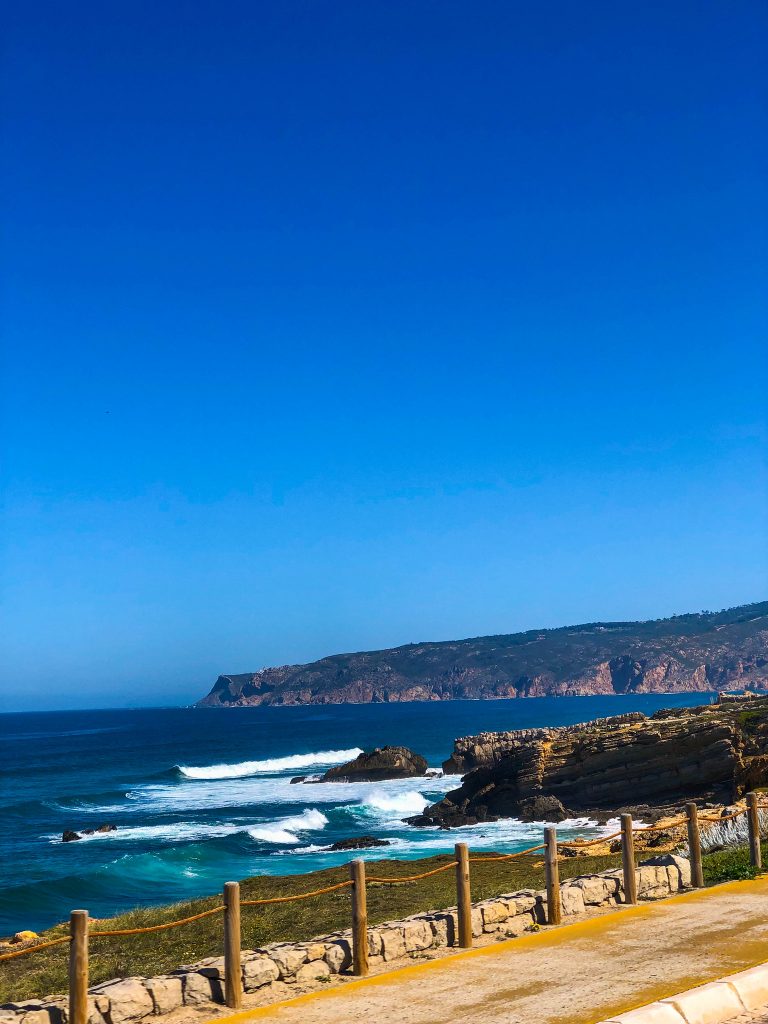
The ride up to Cabo da Roca was actually one of my favourite parts of the trip. It seemed as we climbed up the cliffside, the environment around us kept changing. At one point we were driving along coastal beaches and sand dunes, in another minute we were surrounded by lush rainforest-like trees, and finally, after coming through the forest, we reached the top of the mountains, and there seemed to be nothing but rocks, cliffs,green grass and a never ending expanse of ocean.
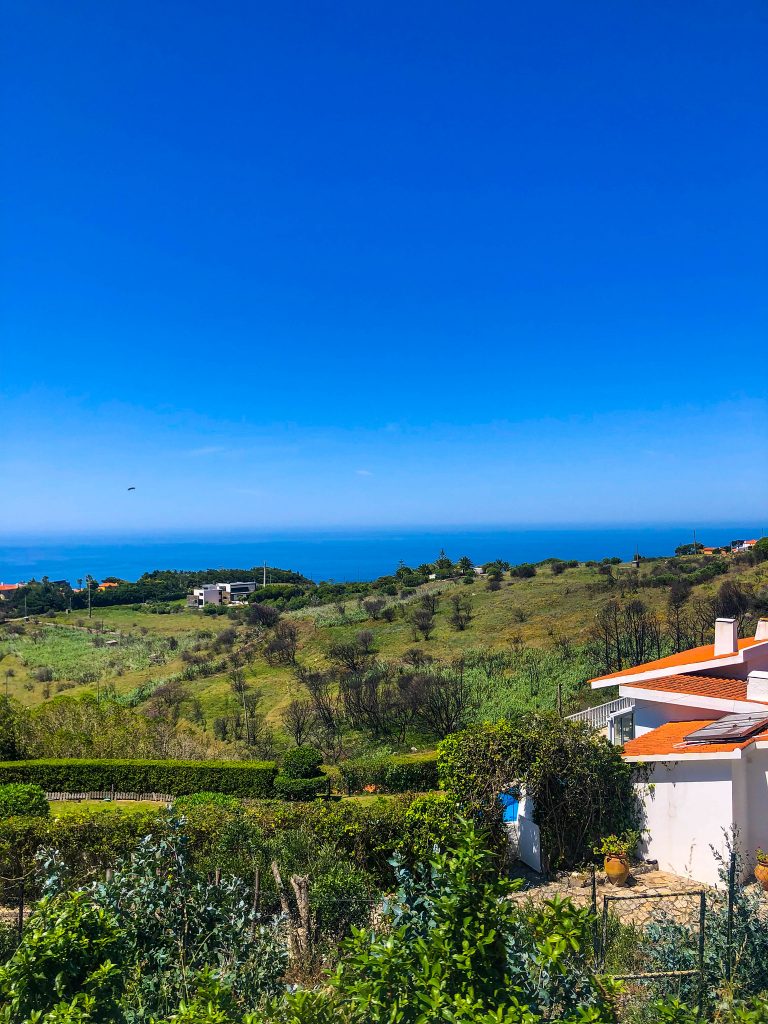
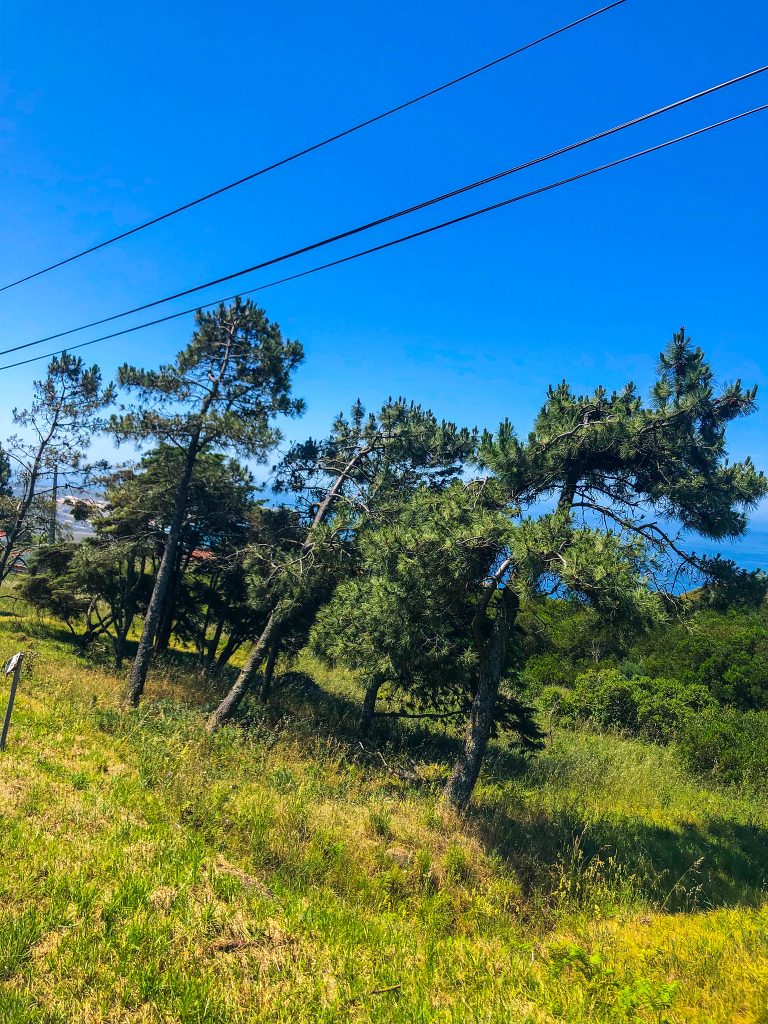
TIP: Even on warm days Cabo da Roca is exceptionally windy, and it’s higher altitude makes it pretty chilly! Be sure to bring a sweater or jacket with you.
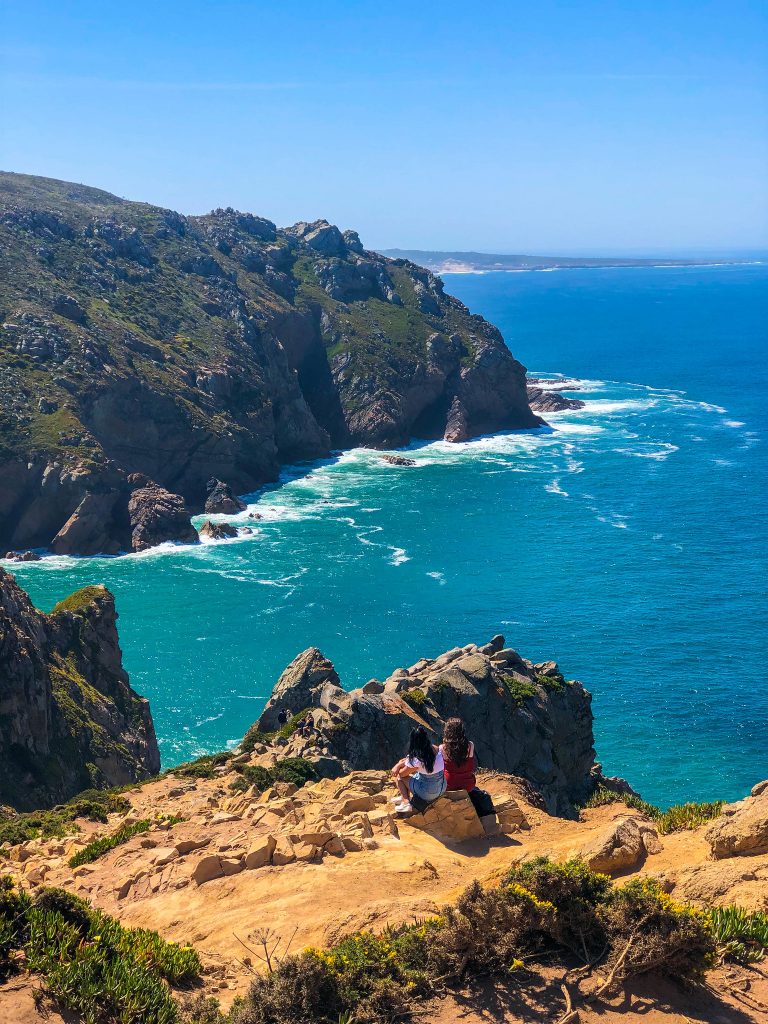
Cabo da Roca
Arriving at Cabo da Roca, you’ll first notice the red-topped lighthouse and terracotta roofs of the building of the National Park office. But the real draw of Cabo da Roca doesn’t open itself up to you until you step off the bus or car, and walk down to the cliff’s edge. And then wow! What a sight! Cabo da Roca is famously the westernmost point of mainland Europe.
Looking out across cliffs you’ll see nothing but a vast expanse of sparkling blue waters belonging to the Atlantic Ocean. To the left, you’ll have the most spectacular view of the Serra de Sintra coastline as well. While Cabo da Roca is now a big tourist attraction, in the 17th century it’s purpose was mainly defensive. From this vantage point, guards could see any incoming ships which would be approaching Lisbon’s harbour. A considerable advantage in their maritime strategy, especially during the Peninsular Wars.
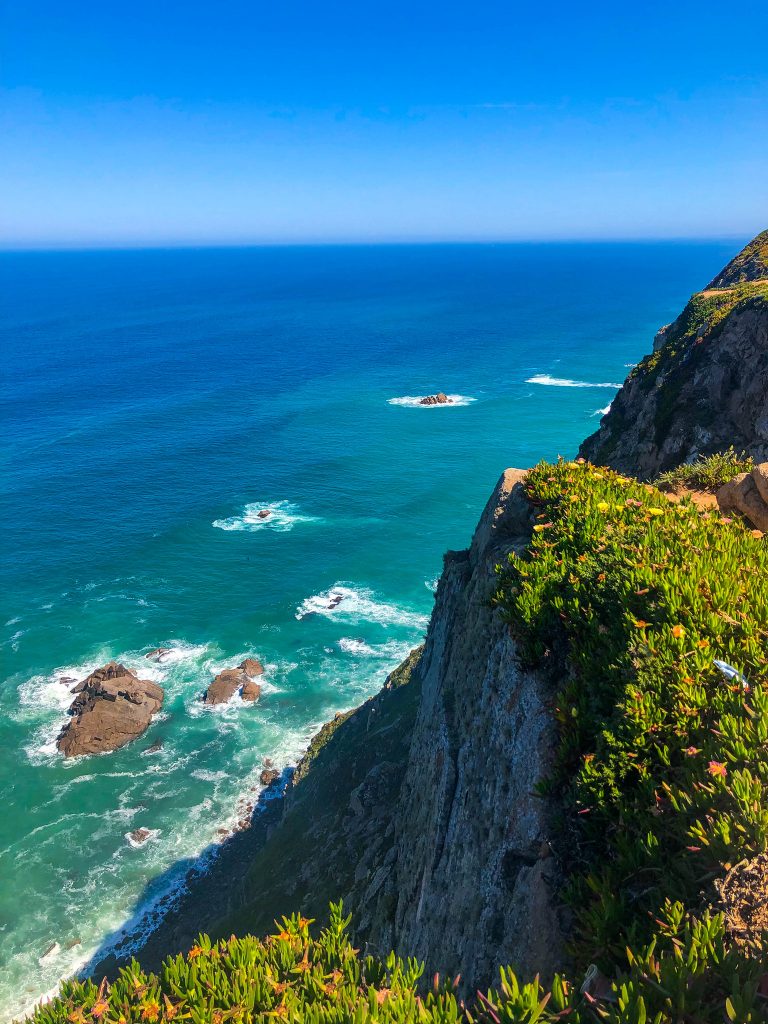
Lighthouse
The iconic lighthouse which sits on the top of the cliffs is not only a beautiful sight to see but an essential part of Portugal’s history as it is the oldest lighthouse in the country. It was built in 1772 and once was the guiding light for sailors on their way back home. Today you can find a quaint souvenir shop inside, with an overpriced “certificate” of your visit to the westernmost part of Europe, but it mostly just adds to the scenery of the entire location.
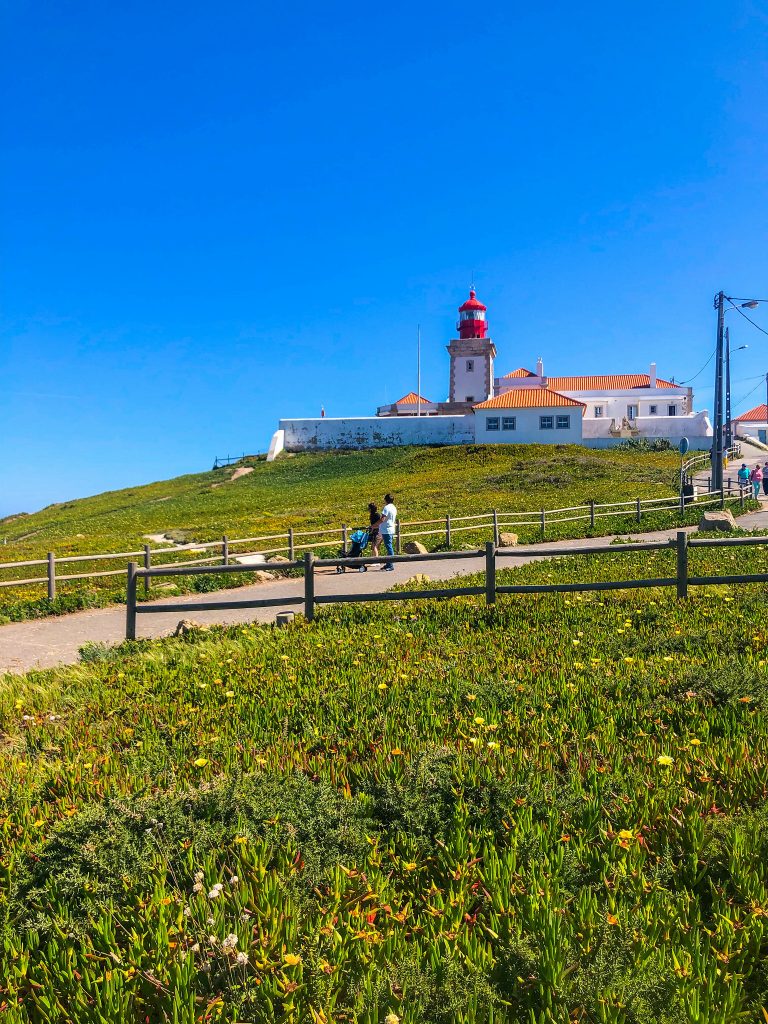
Be sure to take a walk down the entire cliffside, the view changes as you continue walking and the landscape towards the northeastern part of the park is absolutely stunning. It looked so much like the green fields of Scotland or Ireland and not like something in the middle of the Mediterranean.
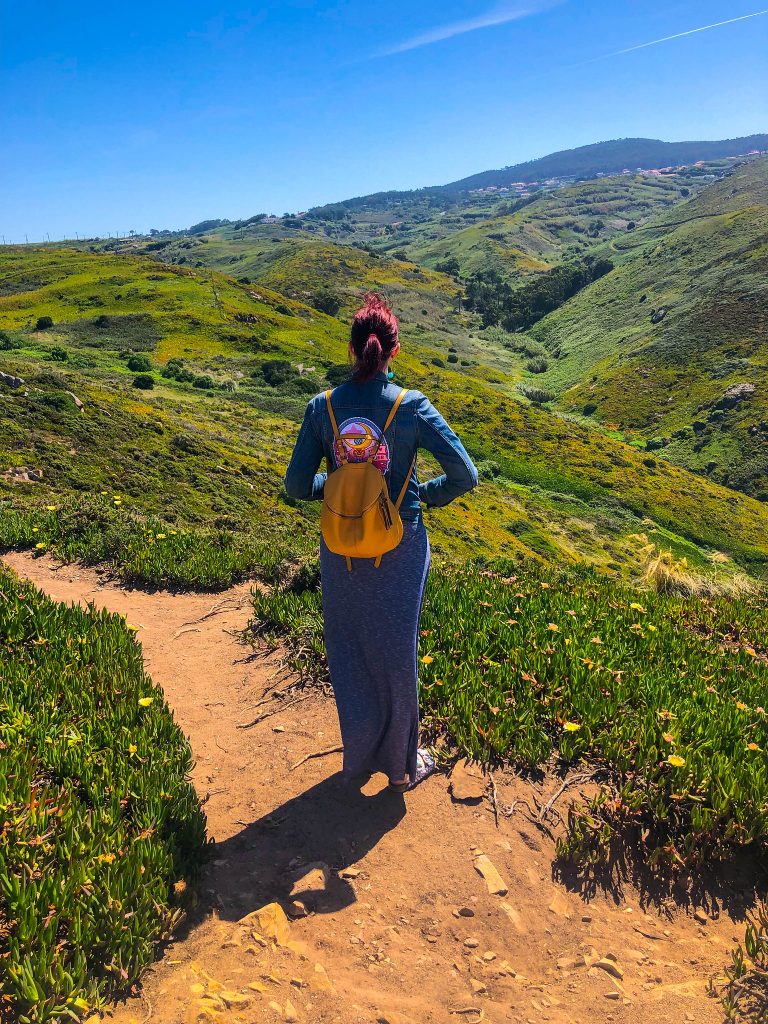
Stop #2: Praia do Guincho
Our next stop is Praia do Guincho, one of the most famous and magnificent beaches on this coastline. To get here if you’re driving, it’s an absolute breeze, just a few minutes drives from Cabo da Roca. If you have a tourist bus ticket, you can get on the next bus returning to Cascais but BE SURE to not only tell your driver you want to get off at Praia do Guincho but also you sit near the driver and make sure to remind him as you approach (you shouldn’t have to do this but since he missed out stop altogether its better to be safe than sorry).
If you’re using public transport hop onto the Scotturb bus #403 and get off at Malveira da Serra, which is the first stop on the bus after getting on at Cabo da Roca. From Malveira da Serra stop change onto the bus #414 and jump off at the Charneca stop. The Charneca bus stop is located about a 25 minutes walk from the beach, and while the walk might not be “ideal”, it’s the easiest and quickest way (not to mention cheapest) when using public transport. Plus, the walk from Charneca is actually delightful since you get to see all the different houses and rural landscape of the suburbs of Cascais along the way. I’ve included a map of the walking route from the bus stop to the beach here so you can follow along.
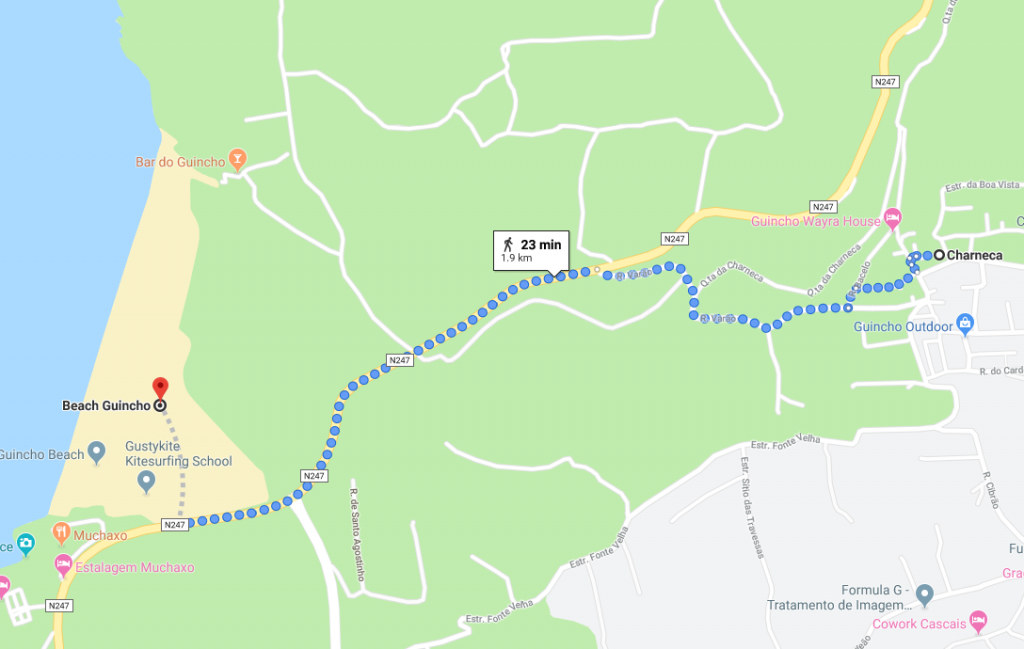
Arrival at the Beach
Once you get to the beach, you can just relax! This beach is famous the world over for surfing. Since it is one of the windiest beaches in Portugal you’ll see hundreds of surfers, windsurfers and kite surfers here no matter the weather! It’s immensely entertaining to watch them out in the water! The beach is located on the edge of the Serra de Sintra National Park, which means that it’s natural beauty has been, and continues to be, preserved and protected. Due to the high winds, the beach is covered in sculptural sand dunes giving it that dynamic appearance. Grass grows through the sand and creates a strong contrast against the white sands and crystal blue waters.
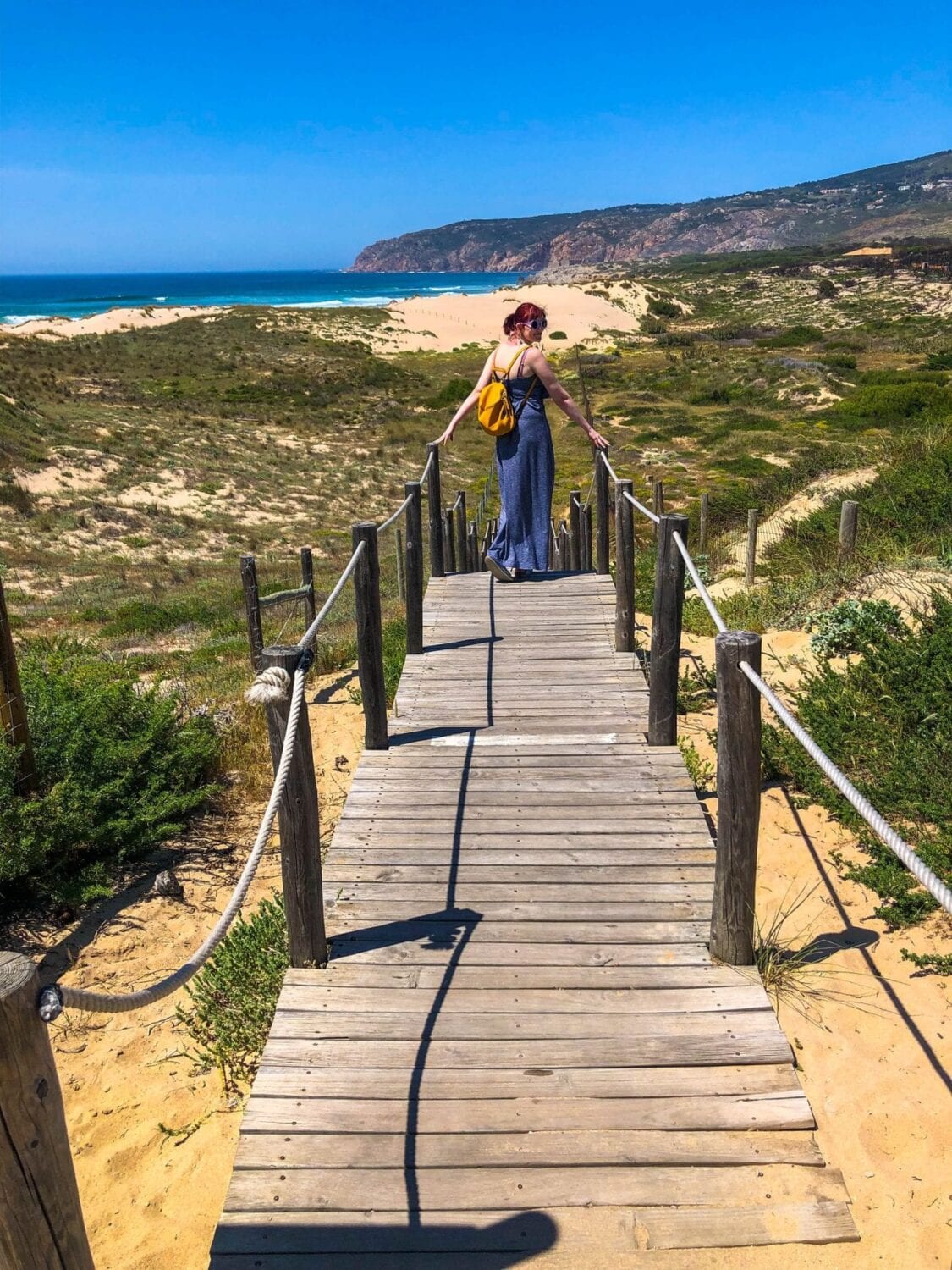
Cresmina Beach
The beach is the perfect spot to grab some lunch with a view. While there are several Michelin star restaurants along the beach, these are enormously expensive (I was SHOCKED), and while they’re highly rated, most of us won’t have that kind of money to spend. But the real shock was the little beach we found at Cresmina Beach (located just on the other side of the dunes from Praia do Guincho). We thought this small shop would have nothing but chips and soda but were pleasantly surprised to find that they served hot pizza, salads, sandwiches and more! And best of all they were well priced and really delicious. Washed down with a freshly made sangria as you sit and enjoy the sound of waves crashing on the sand what more can you ask for?
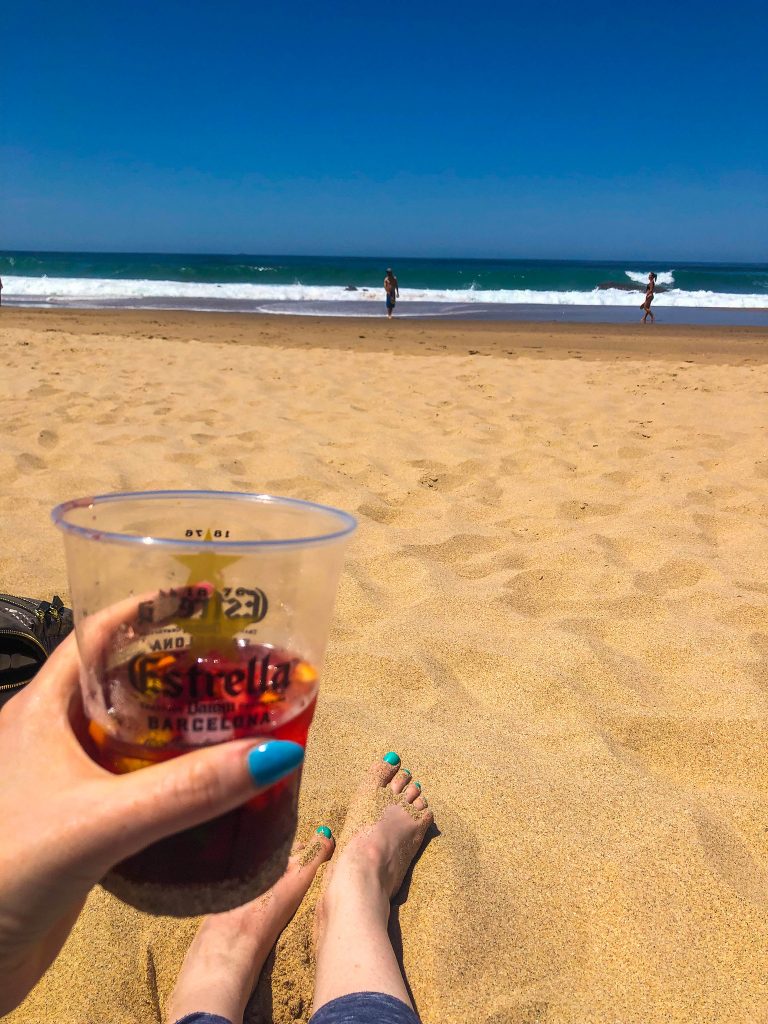
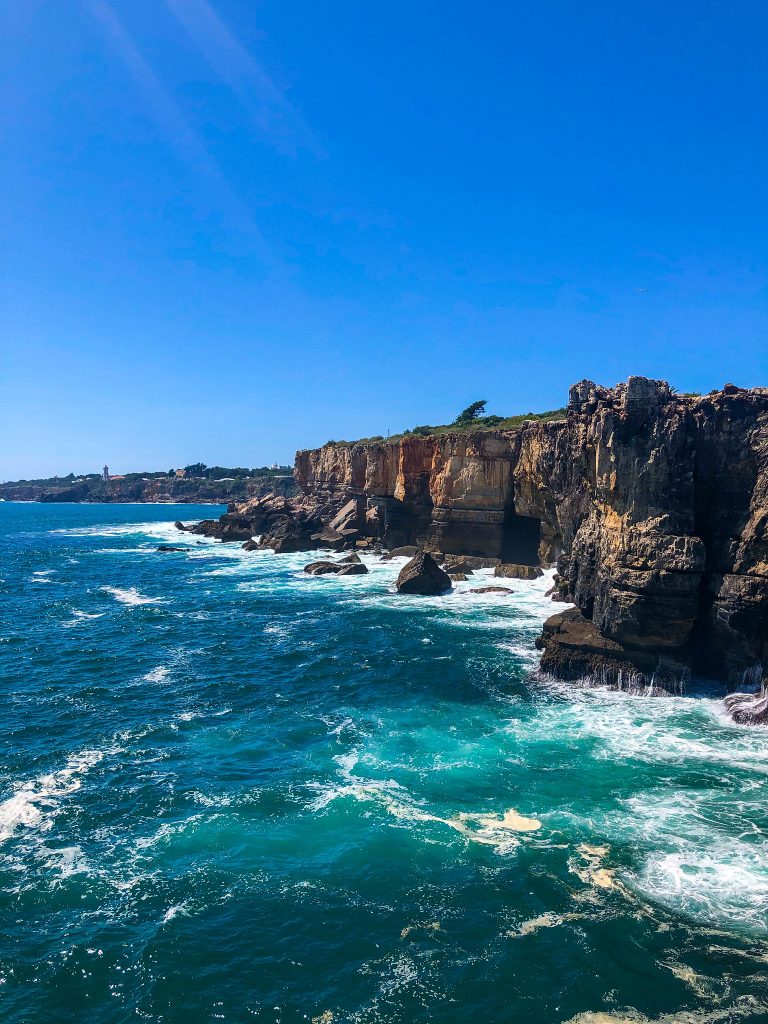
I would recommend spending a few hours here. Have a leisurely lunch, walk along the beach, if the waves aren’t too intense you can even jump in the water for a swim! Cresmina Beach is a little calmer, and you’ll find more people swimming here while Praia do Guincho is THE place to be for surfing. We sat and watched the surfers for hours, it was pleasantly mesmerizing. We visited in May and despite the warm weather the beach wasn’t overcrowded and there still was a lovely peaceful atmosphere to the whole place.
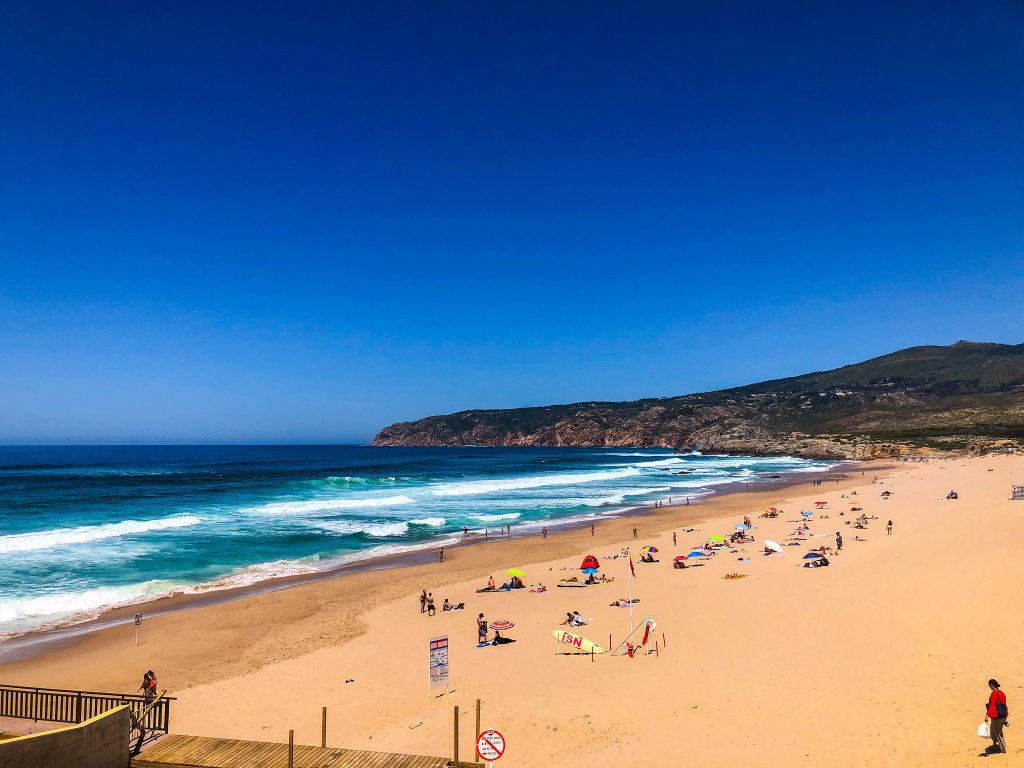
Stop #3: Boca do Inferno
Next up on the itinerary is Boca de Inferno. To get here, if you have a car or are Ubering it’s located just 9 minutes down the road. The hop-on-hop-off tourist bus will also drop you off there (the stop after Guincho Beach) or if you want to take public transport, you can get on bus #415 which picks you up right from Guincho beach. Get off at the stop Bairro do Rosário and walk the 17 minutes towards the cliffs. Map of the walking route is located below.
“Boca do Inferno” in Portuguese means “Hell’s Mouth”. It sounds a lot scarier than it really is. It’s actually quite stunning. Over the years, this rocky outcrop’s proximity to the strong waves created a cave, which then collapsed, leaving a natural arch as a window into the water filled chasm. There is something truly magical about watching the waves as they splash and crash inside the dark cave. They swirl and spin, changing colours as they move and swell.
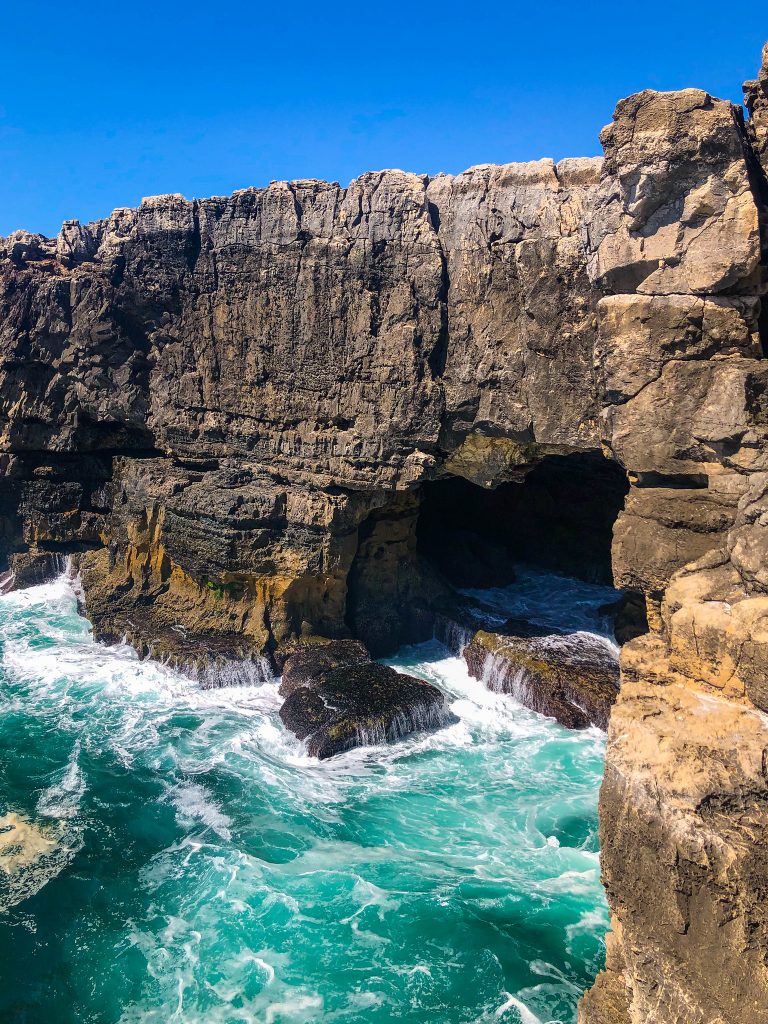
Aleister Crowley
One of the strangest parts of this place’s history is its involvement in the “death” of famed magician and astrologer Aleister Crowley. The occultist came here to fake his death in 1930 with the help of poet Fernando Pessoa. It was meant as a publicist stunt to promote the opening of an exhibition of Crowley’s work at a gallery in Berlin, where he “magically” reappeared when the doors were opened. Perhaps one of the first “social media” stunts of the 20th century.
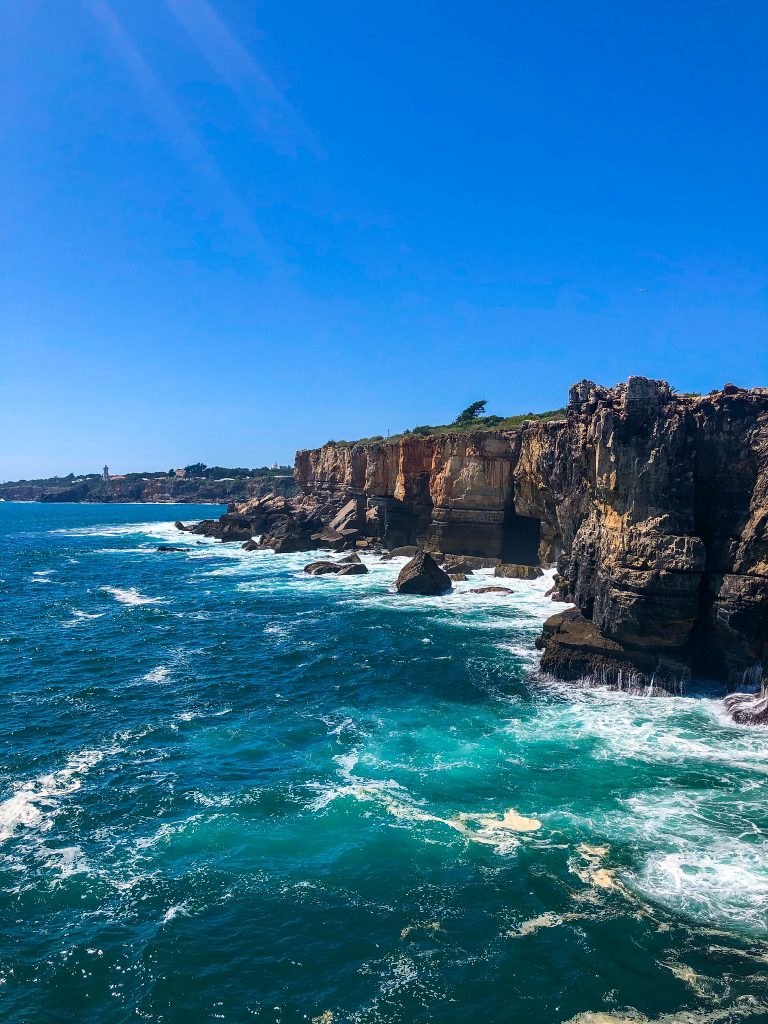
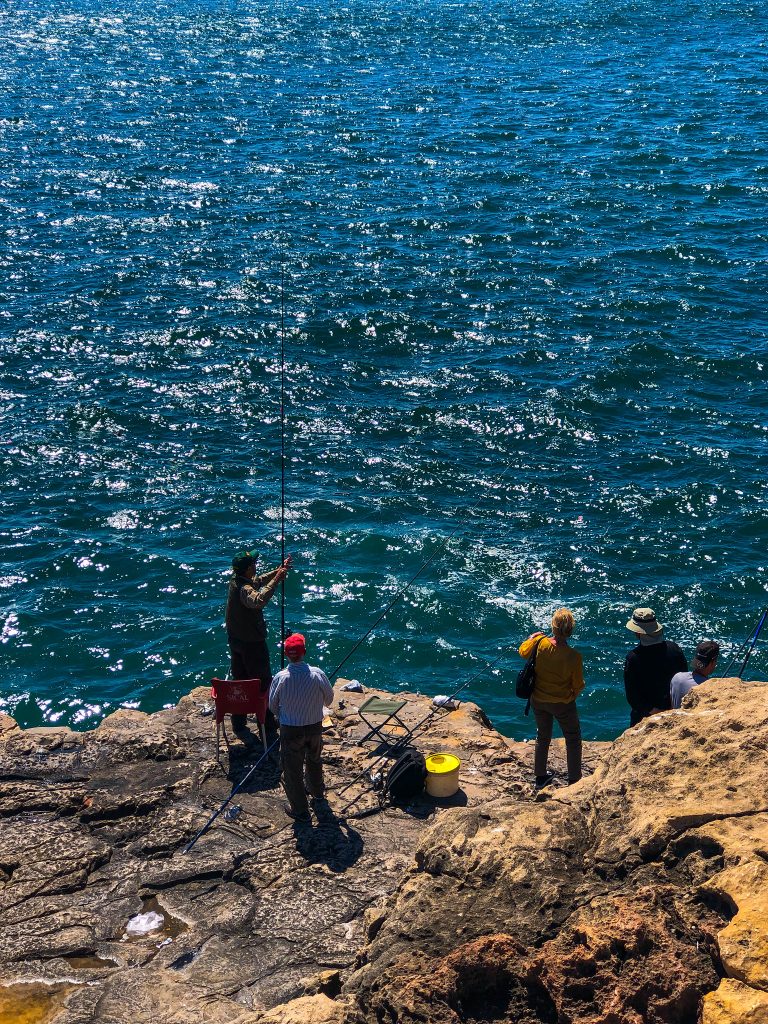
Stop #4: the Santa Marta Lighthouse
From the Boca de Inferno, we will walk the rest of the way back into town. You can also drive back into Cascais, but the walk along the coast is a short and beautiful one with a few small things to see along the way. The Santa Marta Lighthouse is a very Portuguese looking lighthouse, covered with a striped pattern of white and blue tiles. The lighthouse was built on the site of a 17th-century fort in 1868. Although it has long been put out of use, it now maintains itself as a little museum and lovely piece of traditional decoration along the coast. The manor house it sits behind is a coast paradise and duo, along with scenic palm trees is a picture perfect photo.
Along the cobblestone pedestrian walkway back into town, you’ll pass dozen of the enormous estates and gorgeous houses. Some of these mansions were built back in the 17th century by the rich and famous of Lisbon’s high society. One of these famous mansions is the Museu Condes de Castro Guimarães. This manor house is now a small museum housing paintings, ancient artefacts & old books collected by the owner, now open to the public.
View this post on Instagram
Stop #5: Citadel of Cascais
Continuing along the road you’ll see the large, rocky walls of the Citadel of Cascais start to emerge as you creep closer to the city. These fortifications were built in the 15th and 17th centuries to defend the Cascais coastline. There are three different buildings which make up the entire complex; the tower of Santo António de Cascais, the Fortress of Our Lady of Light and the former Royal Palace. You might be surprised to learn that the Royal Palace was restored and converted into a hotel in the 21st century. It’s incredible private chapel is now used to host some of the most amazing weddings which bring people from all over the world to Cascais.
Stop #6: Igreja Matriz de Nossa Senhora da Assunção
One of the most amazing churches in Cascais is the Church of Our Lady of the Assumption or “Igreja Matriz de Nossa Senhora da Assunção“. The church dates all the way back to the 16th century, and because Cascais was left virtually untouched by war or modernization, the church maintains its historic design. Inside you’ll find golden niches surrounded in stunning blue an white 18th-century traditional Portuguese tile work.
Stop #7: Ribeira Beach Cascais
Turning along the Avenue Dom Carlos, you’ll come upon Ribeira Beach in the town Cascais. Imagine having a beach this beautiful just steps away from the centre of town! You could even come down here on your lunch break! The beach is full of brightly coloured umbrellas, laughing children playing in the sand and there is ALWAYS a team of volleyball players battling it out on the small court.
Behind the beach is a classic Portuguese square with those iconic black and white cobblestones in a wave pattern. You’ll see this same pattern used all over Portugal but set right next to the ocean it feels even more appropriate. Also in the square is a beautiful bronze statue of a woman whose leg’s form the shape of a wave, her body wrapped in a ship’s rope. She looks out towards the ocean, perhaps eternally waiting for sailor to return home.
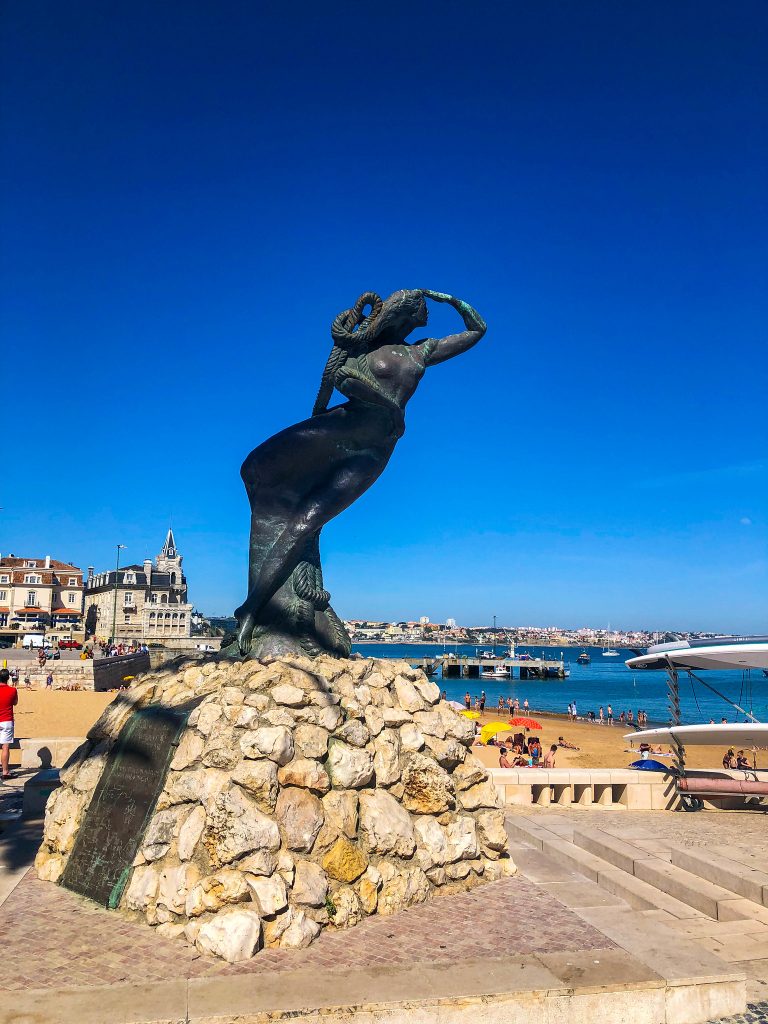
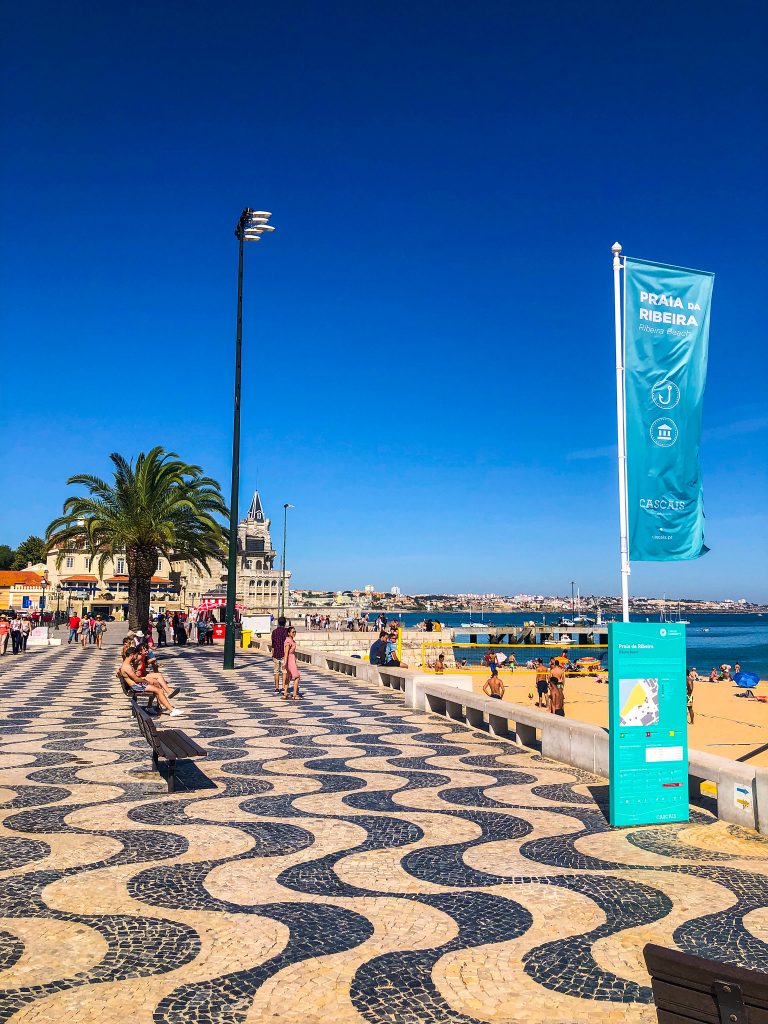
Stop #8: Palacete Seixas
Standing on the beach, you can see a castle-like structure in the distance, this is the Palacete Seixas. This old military fort was transformed in the 19th century into a grand mansion for a wealthy aristocrat to live in. When he died, he left the structure to the Portuguese Marines in his last will and testimony. Today it’s used as a meeting office for Marine officials but also creates a wonderful backdrop for beachgoers.
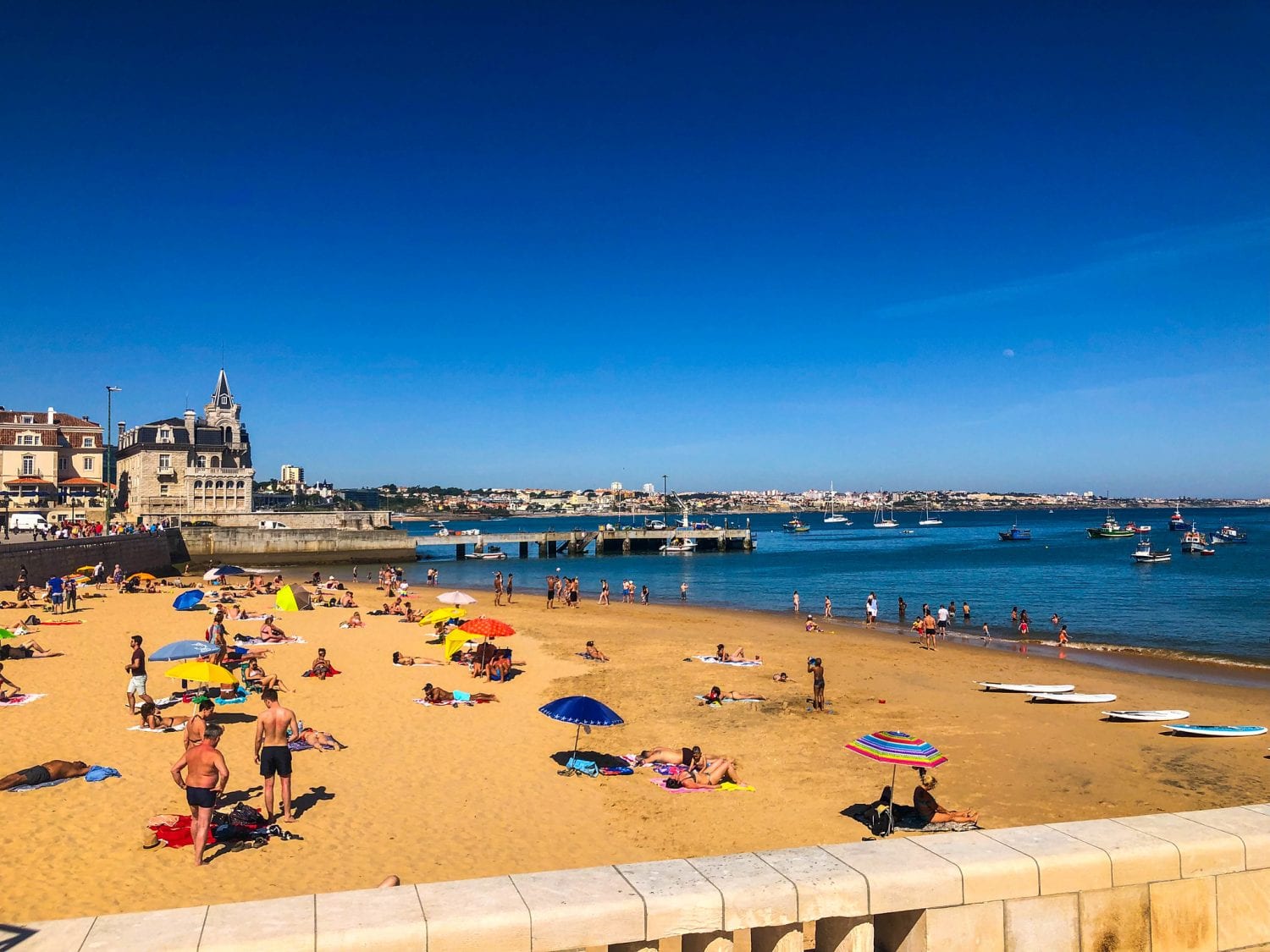
Stop #10: Cascais Town Hall
Opposite the beach is the great Town Hall, distinguishable by its ornate facade covered in azulejos (Portuguese tiles) depicting various Catholics Saints across the facade.
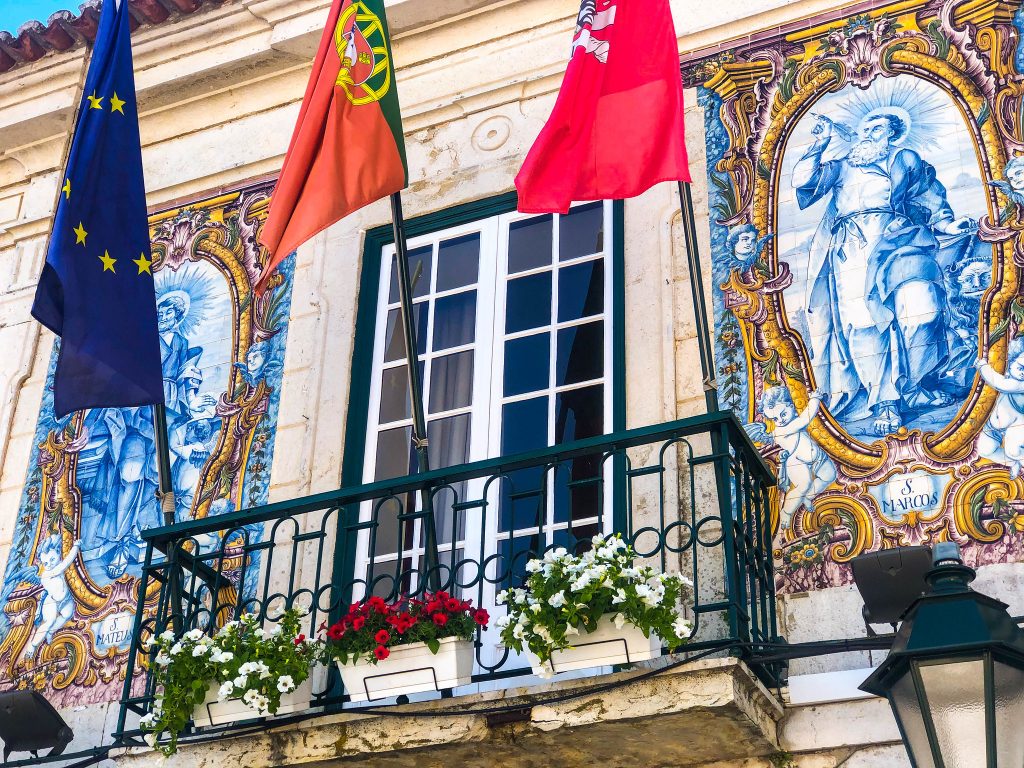
In the centre of the Town Hall square is the statue of King Peter the 1st. King Peter was the one who declared Cascais a township and gave them independence from Sintra in 1364. Before this, Cascais was seen as Sintra’s little brother. A community simply put in place to support the people of Sintra, but over the years it’s fishing industry swelled beyond anyone’s expectations, and it began bringing in more money for Portugal than Sintra ever could. It felt strongly that it deserved this designation, but it wasn’t until King Peter that Cascais was finally able to become its own independent city and therefore King Peter is greatly respected amongst the people of Cascais.
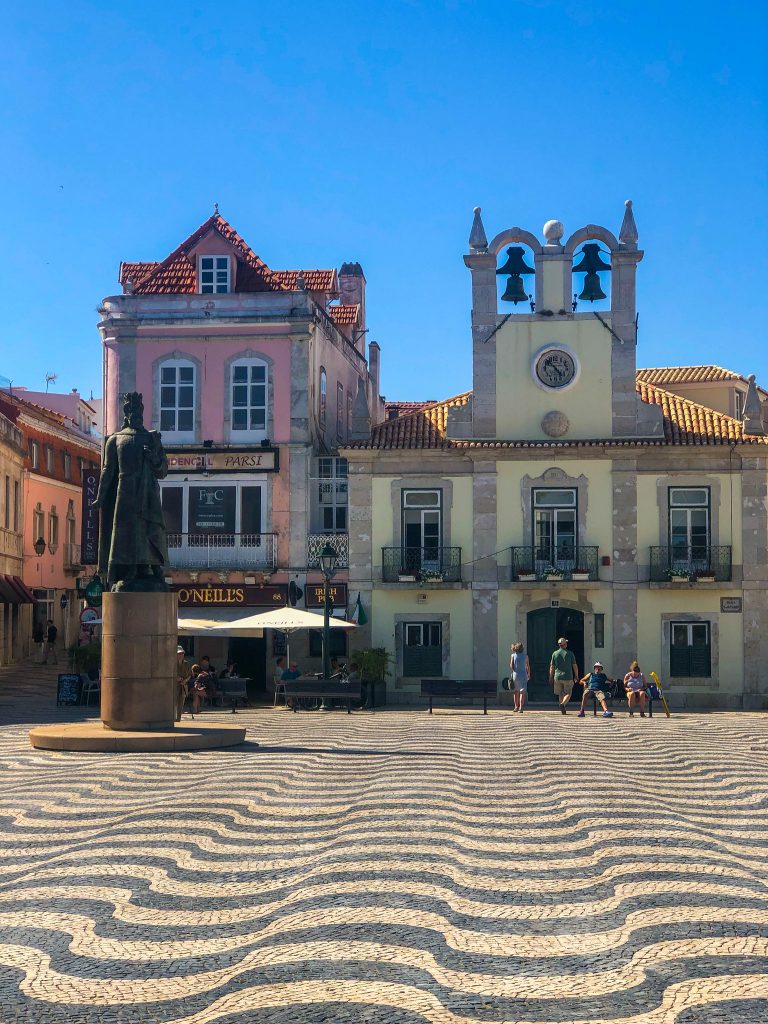
Stop#11: Largo Luís de Camões
Just down from the Town Hall is Largo Luís de Camões, a pedestrian-only street which is where you’ll find dozens of lively bars and restaurants. So many of the roads which connect to Largo Luís de Camões are also worth exploring, they are littered in pretty pastel houses replete with flowers pouring off their rooftops. Around each corner, see if you can spot the incredible tiled street signs which make even the most simple alley look like a royal lane.
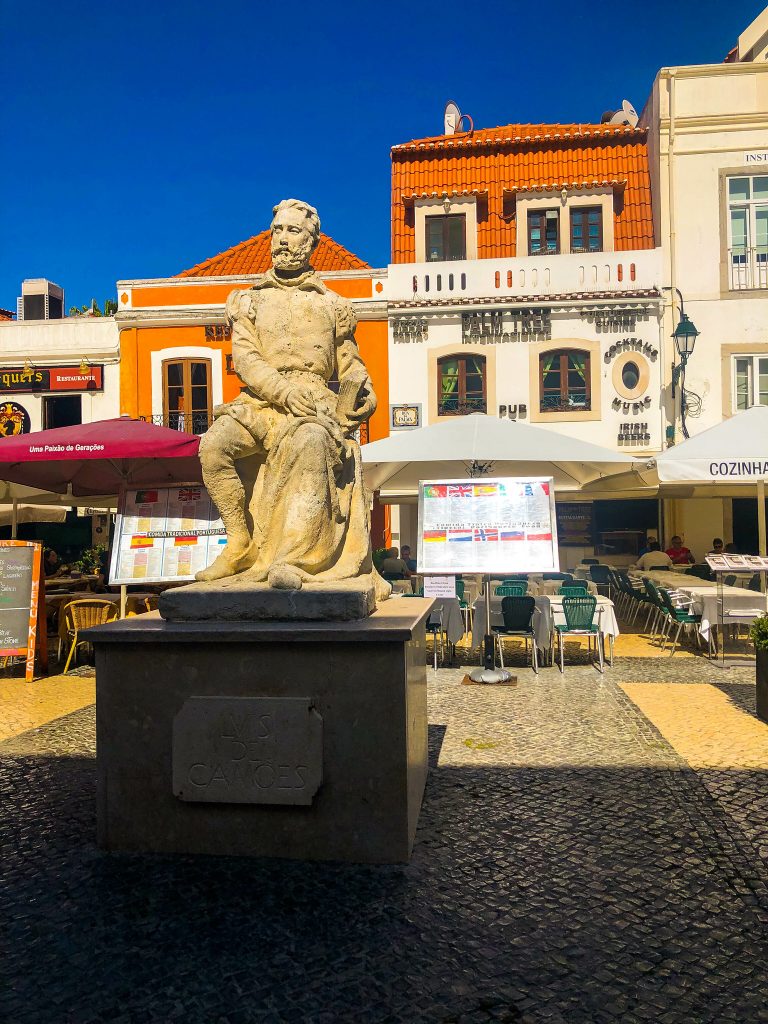
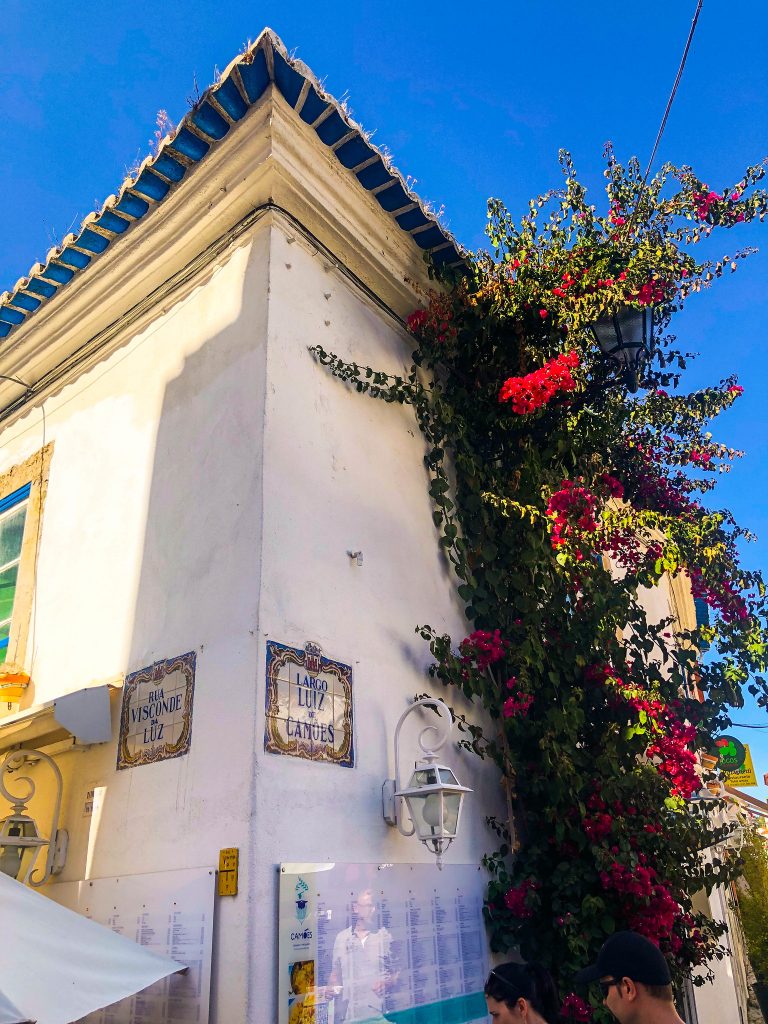
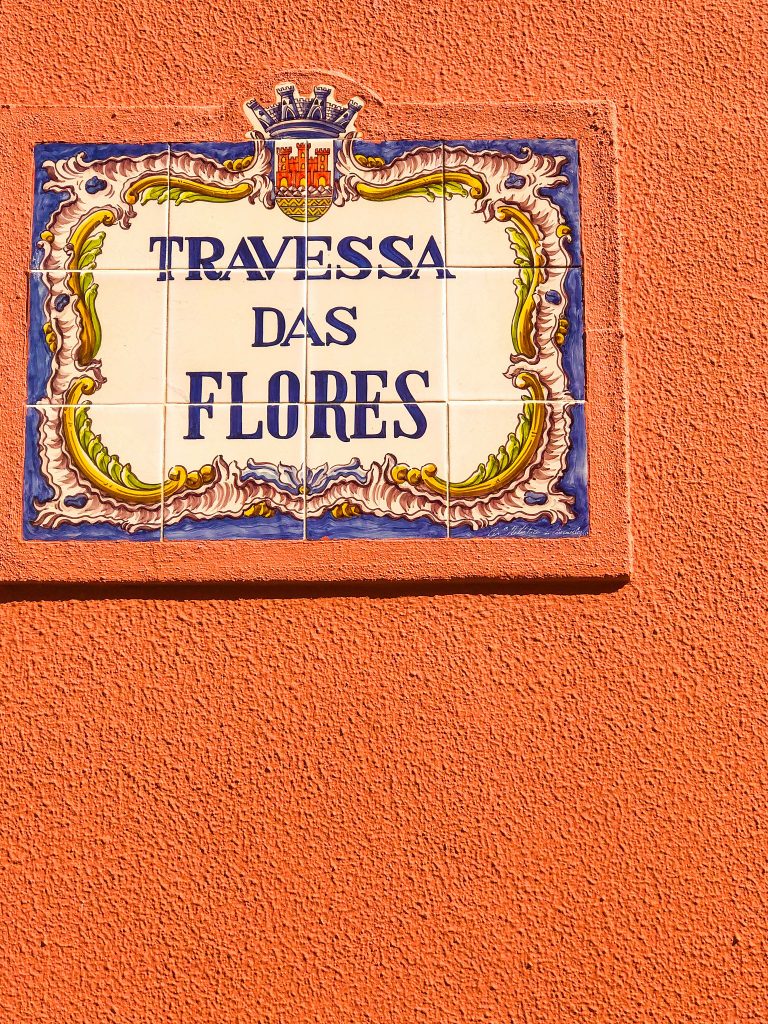
Stop#12: Rue Frederico Arouca
A little way up from the Largo Luís de Camões, turn right and continue down Rue Frederico Arouca, another street dedicated to pedestrians only. This street is filled with eclectic shops, souvenir stores and gorgeous old architecture full of character. This is a great place to shop for some items for friends and family back home as its relaxed atmosphere is one of the best places to leisurely find some hidden gems.
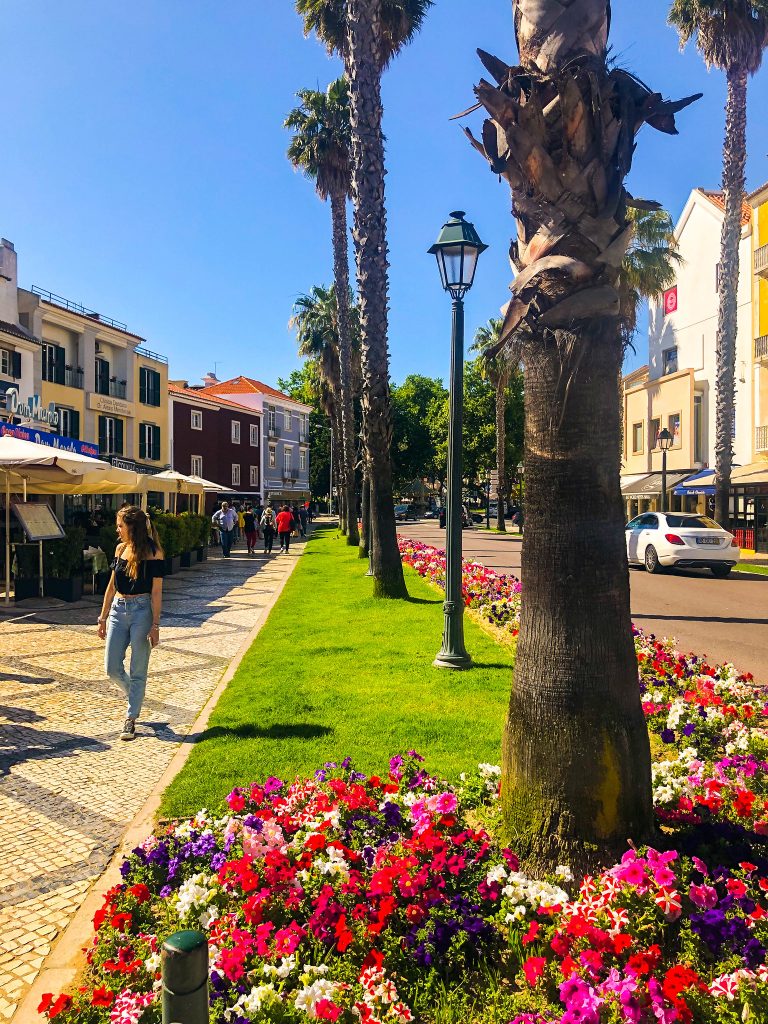
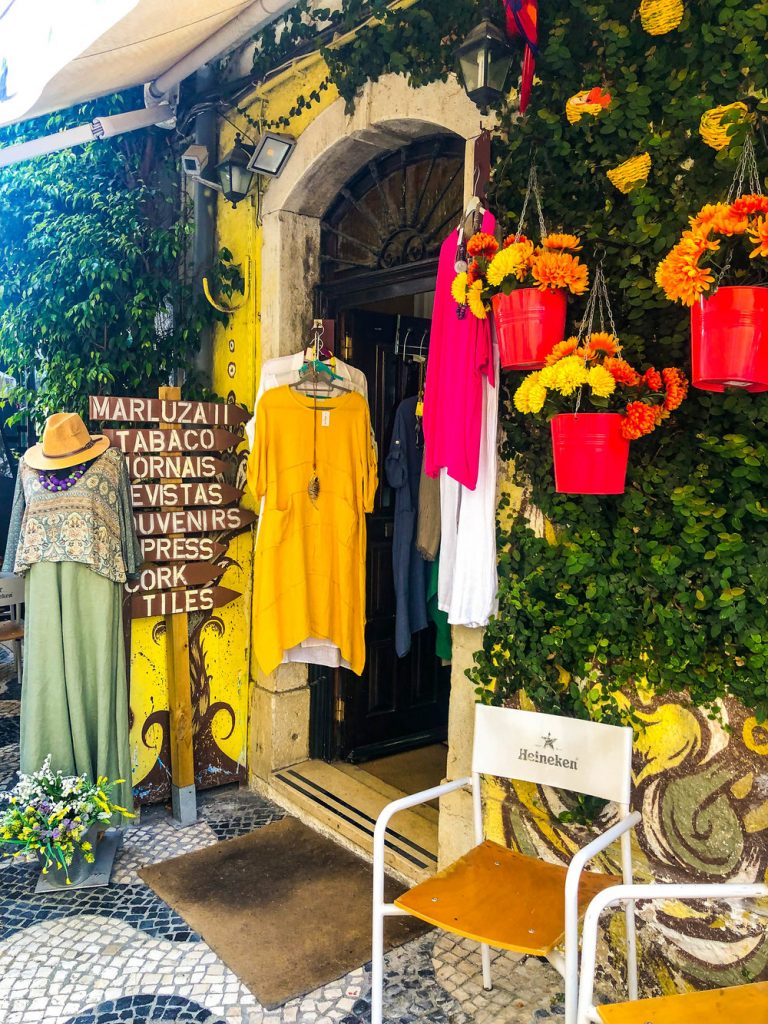
Stop#13: Jardim Visconde da Luz
At the top of the main street is the Jardim Visconde da Luz, a beautiful park where locals come to play with their kids and get away from the heat of the sun under the shade of these green trees. In the centre of this adorable square is one of the most beautiful carousels I’ve ever seen! Only children can ride it since it’s so small, but each of the animals on the carousel is so charmingly sculpted and full of life! Unlike some carousels which are more fantastical, this one is filled with farm animals which look like they’ve been plucked straight from a nursery rhyme.
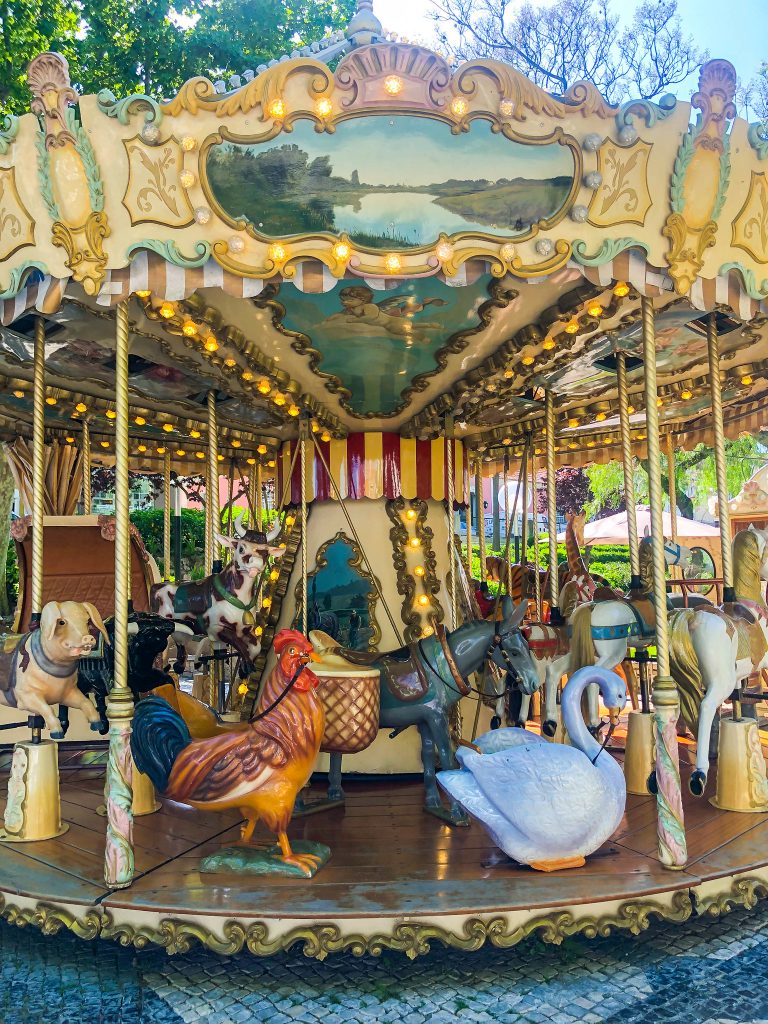
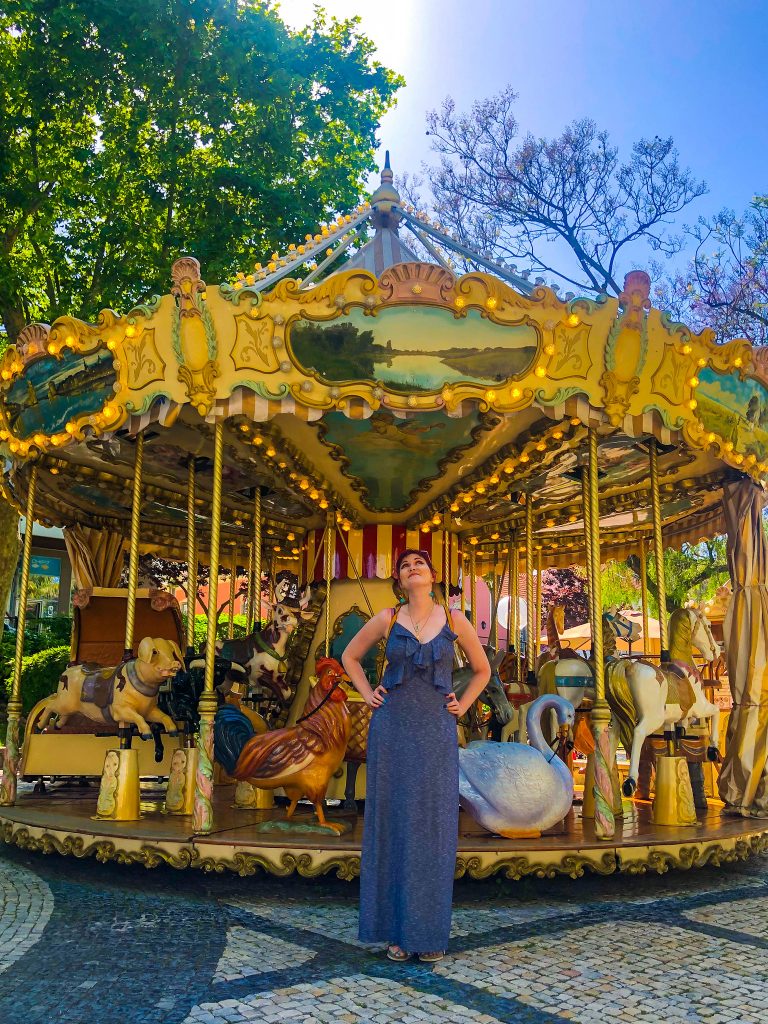
Stop#14: Moules and Gin
Across from the park is a little restaurant serving up one of Cascais’ specialities; seafood – specifically, mussels! Moules and Gin is a low key, off the tourist track, restaurant popular with locals due to its low prices and straightforward menu which only aims to highlight the incredible taste of fresh seafood right from the ocean!
View this post on Instagram
Stop#15: Gelados Santini
For dessert, just follow the line up around the block surrounding Gelados Santini. Beach towns really do manage to have the best ice cream and gelato, the perfect combination for a day out in the sand and sun. The handmade gelato is fresh, and if there are any seasonal flavours, those are a must-have! The strawberry flavour feels like licking the berries right off the vine!
View this post on Instagram
With the last lick of gelato comes the end of our day in Cascais. To return back to Lisbon just hop back on the same train which brought you here or head back to the city in your car. Having dinner and dessert in Cascais means you’ll miss the end-of-day rush of both locals and tourists heading back into the city. Hopeful you’ll be swayed into coming over to Cascais on your own and skip the bus tours.
There is just so much to see here, and those organized tours are much too rushed for the rich history which Cascais offers up. With a little effort and organization, you can absolutely see all there is to see here on your own. If you have any questions about Cascais, let me know in the comments! I can’t wait to return and perhaps even spend the night to see this fantastic city when the sun sets, and there’s nothing but the sound of the ocean crashing on the shore to lull me to sleep 🙂
Happy Travels, Adventurers!
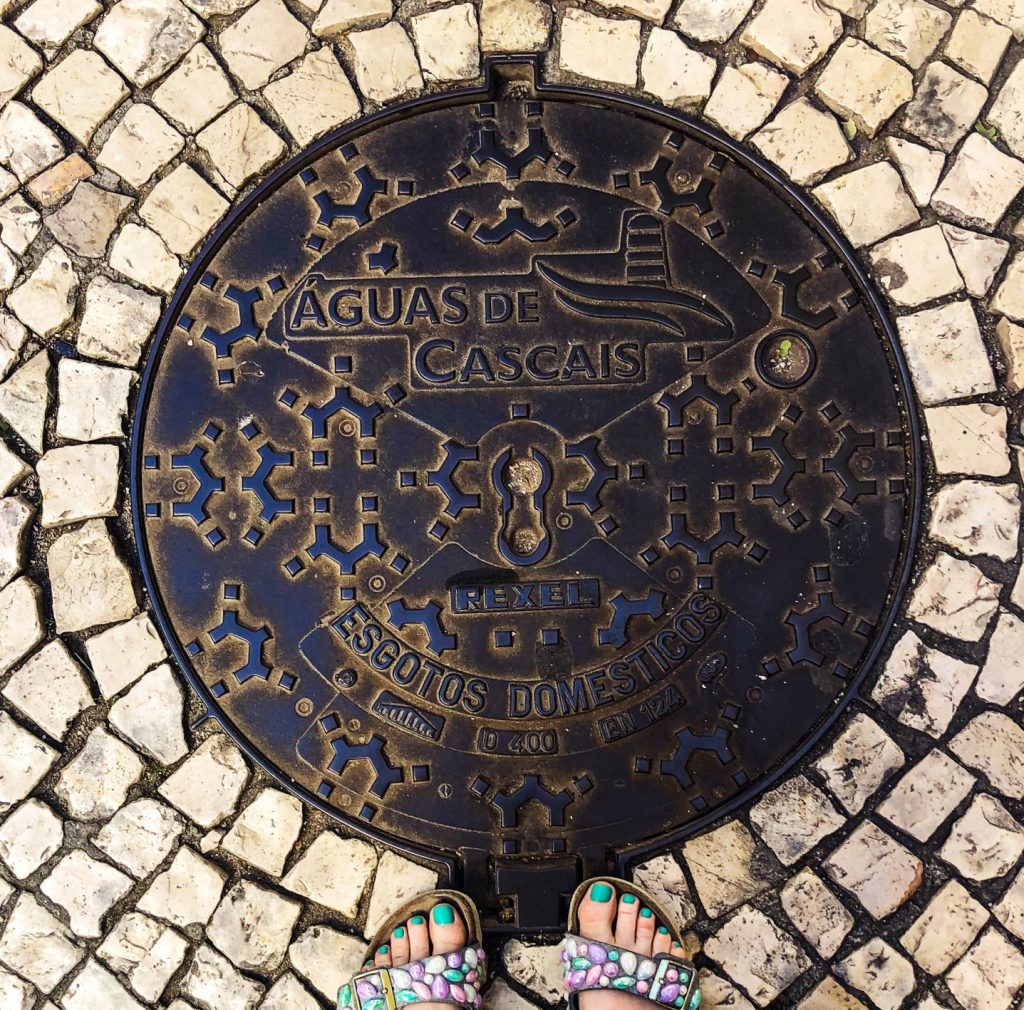
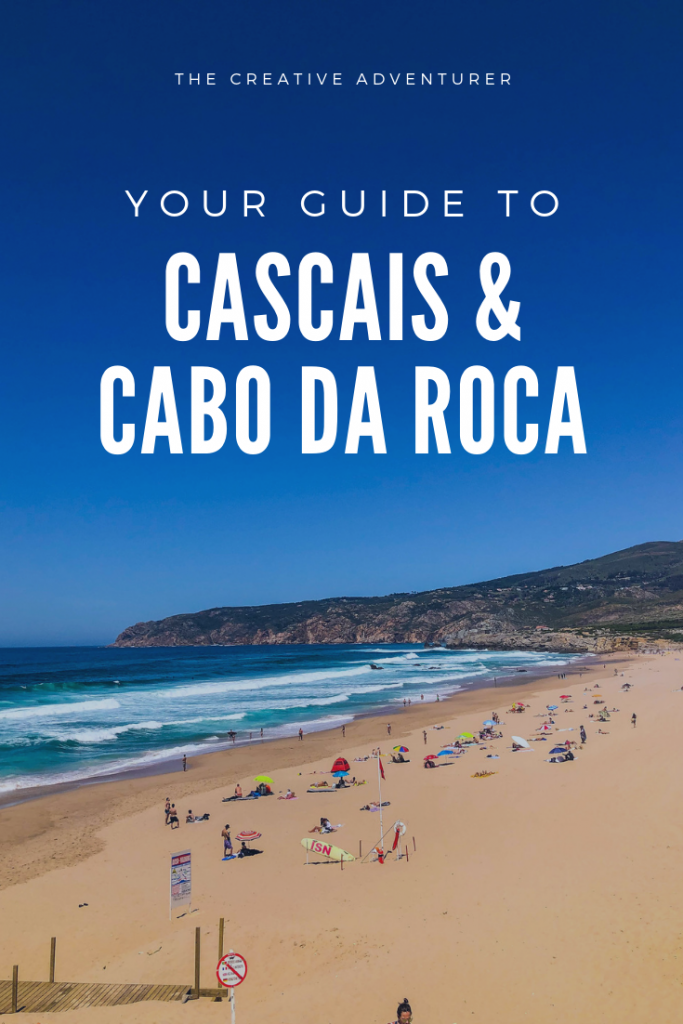
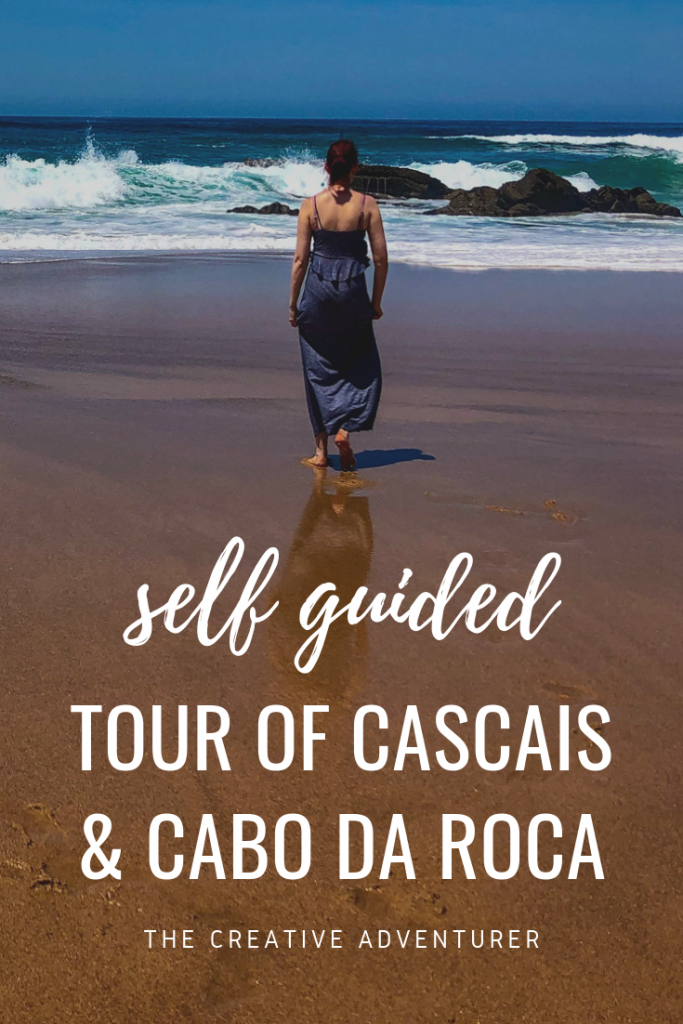
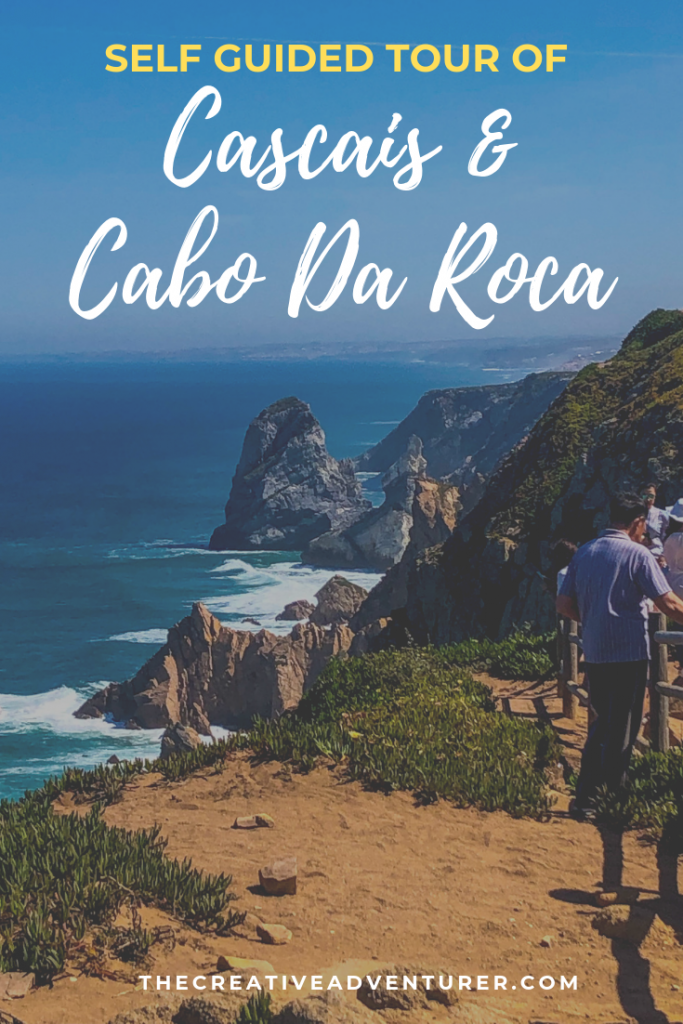
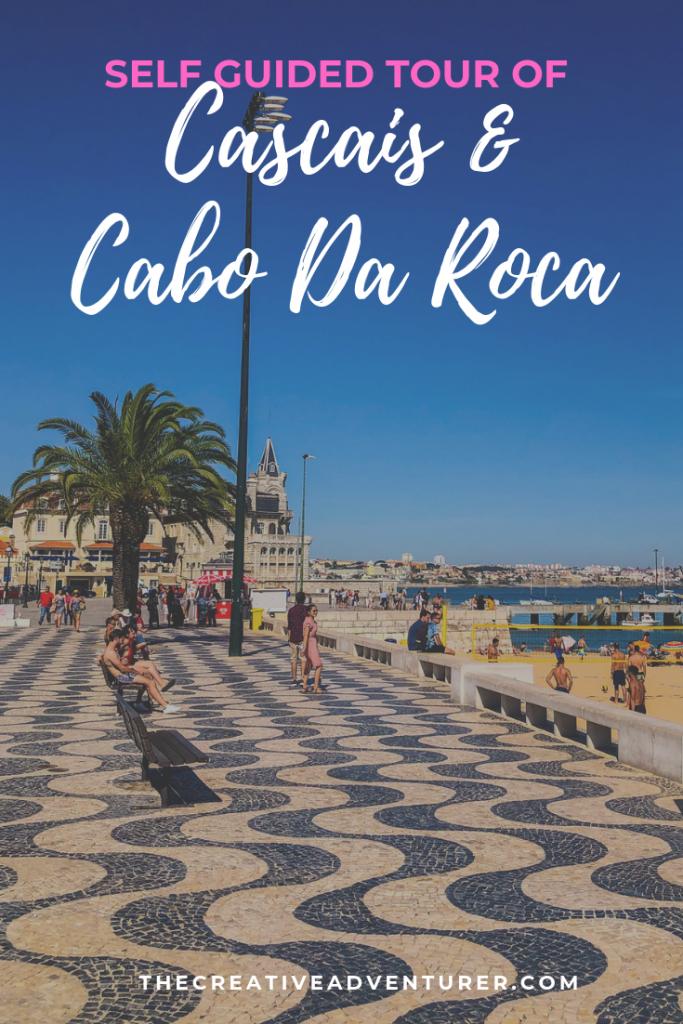


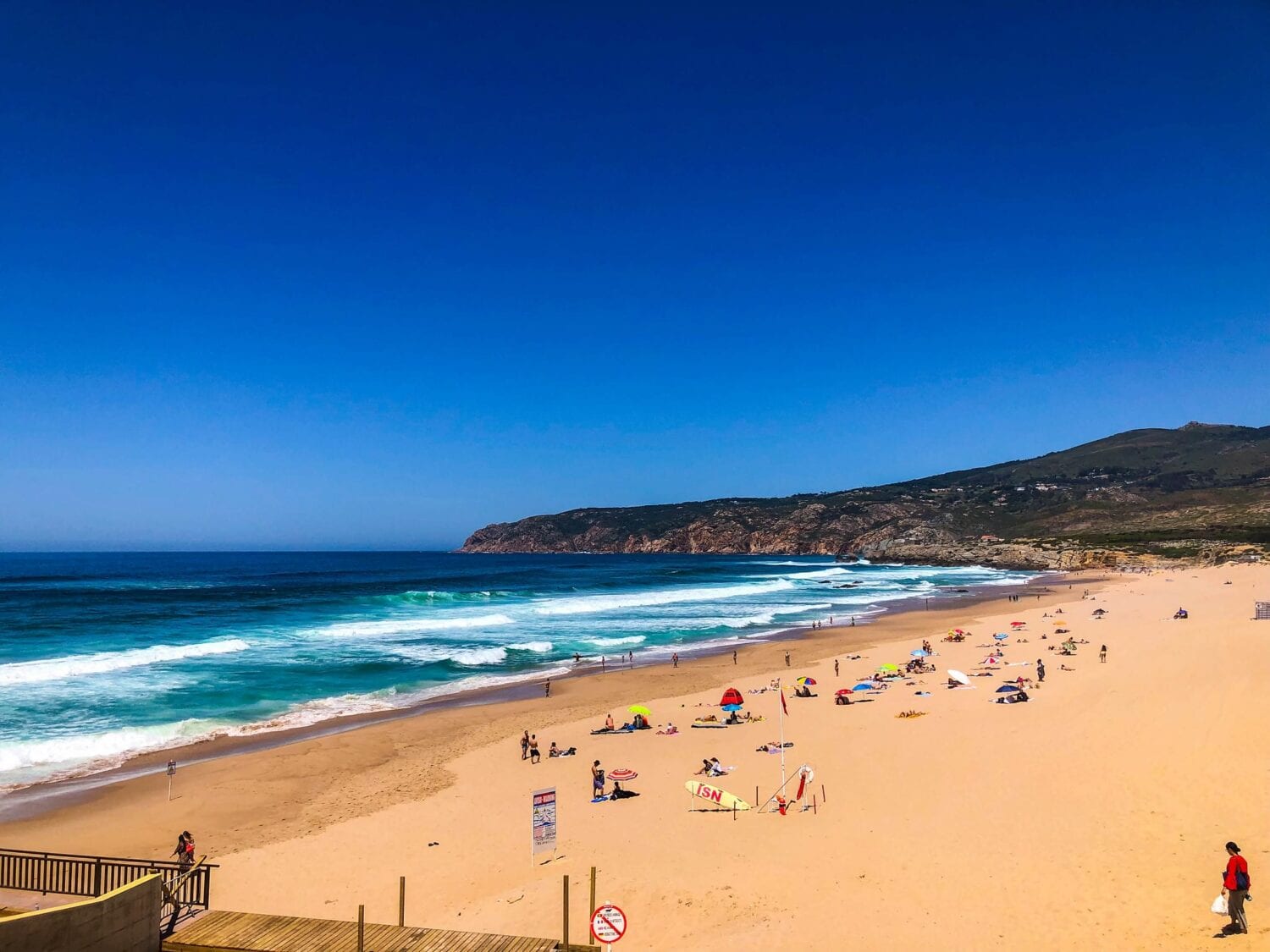
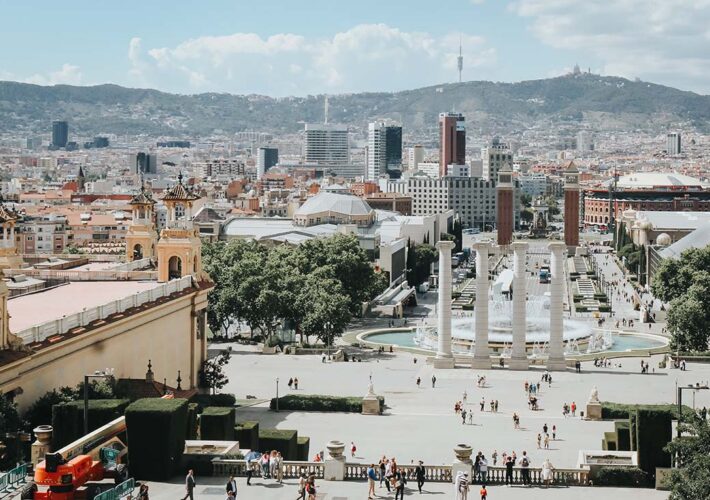
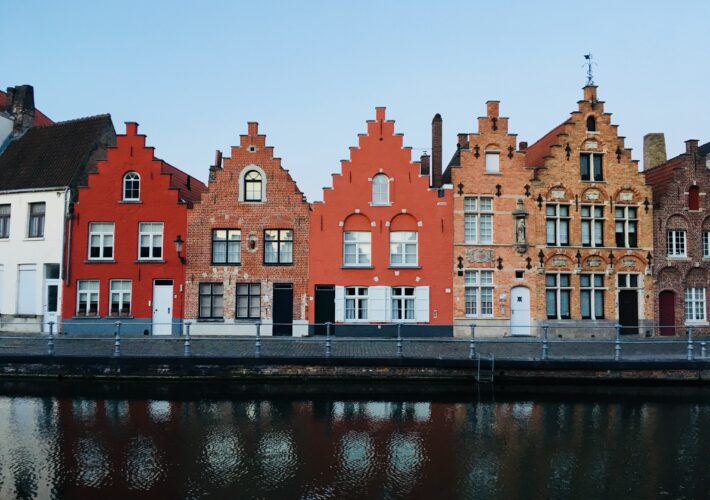
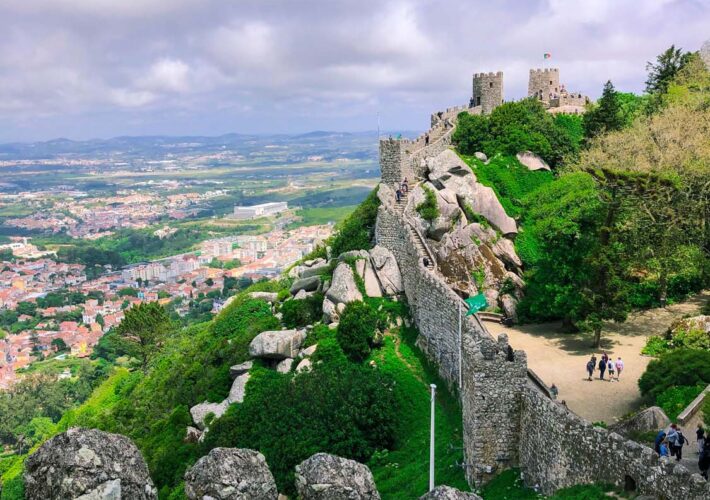
Leave a Comment